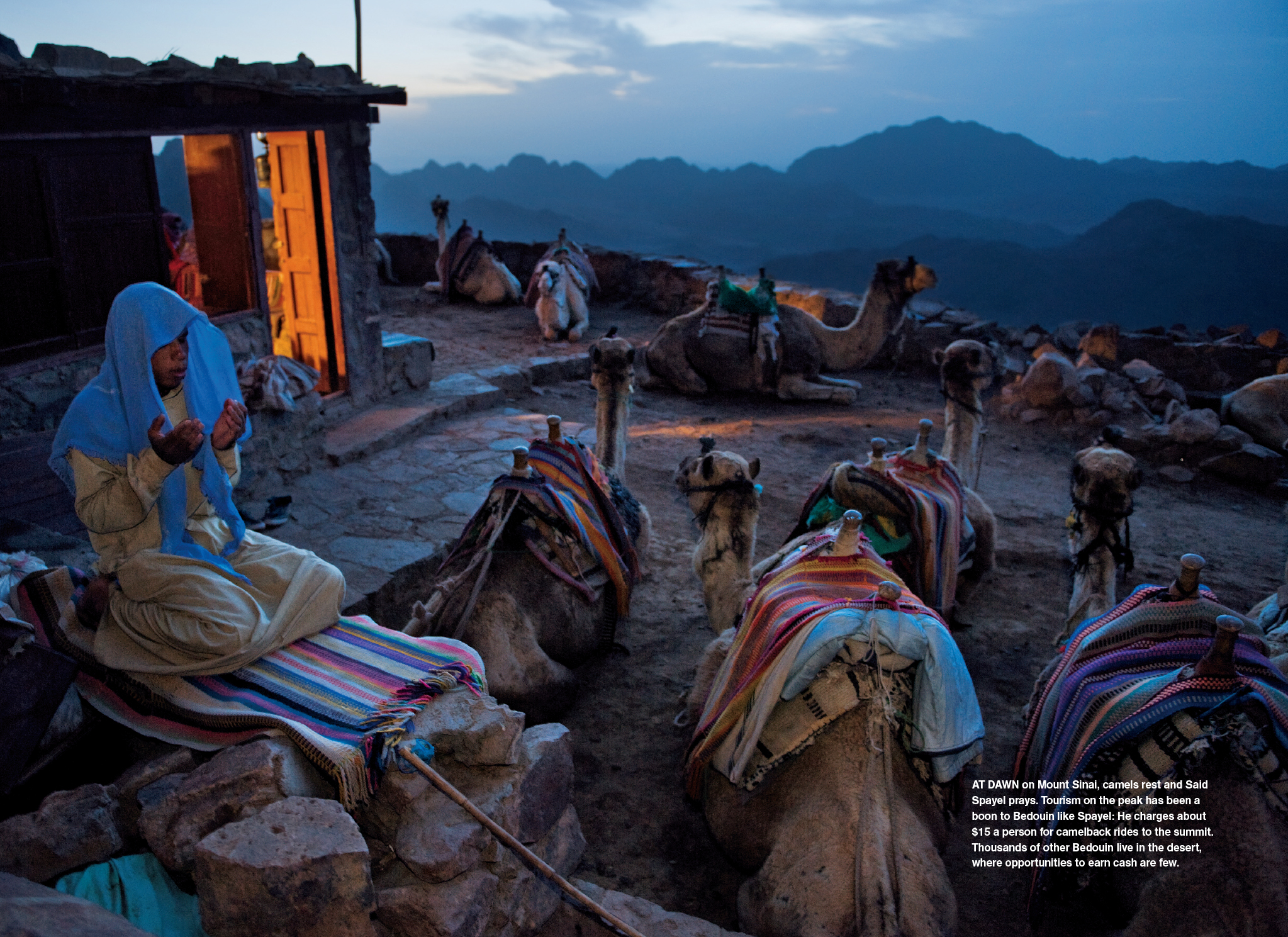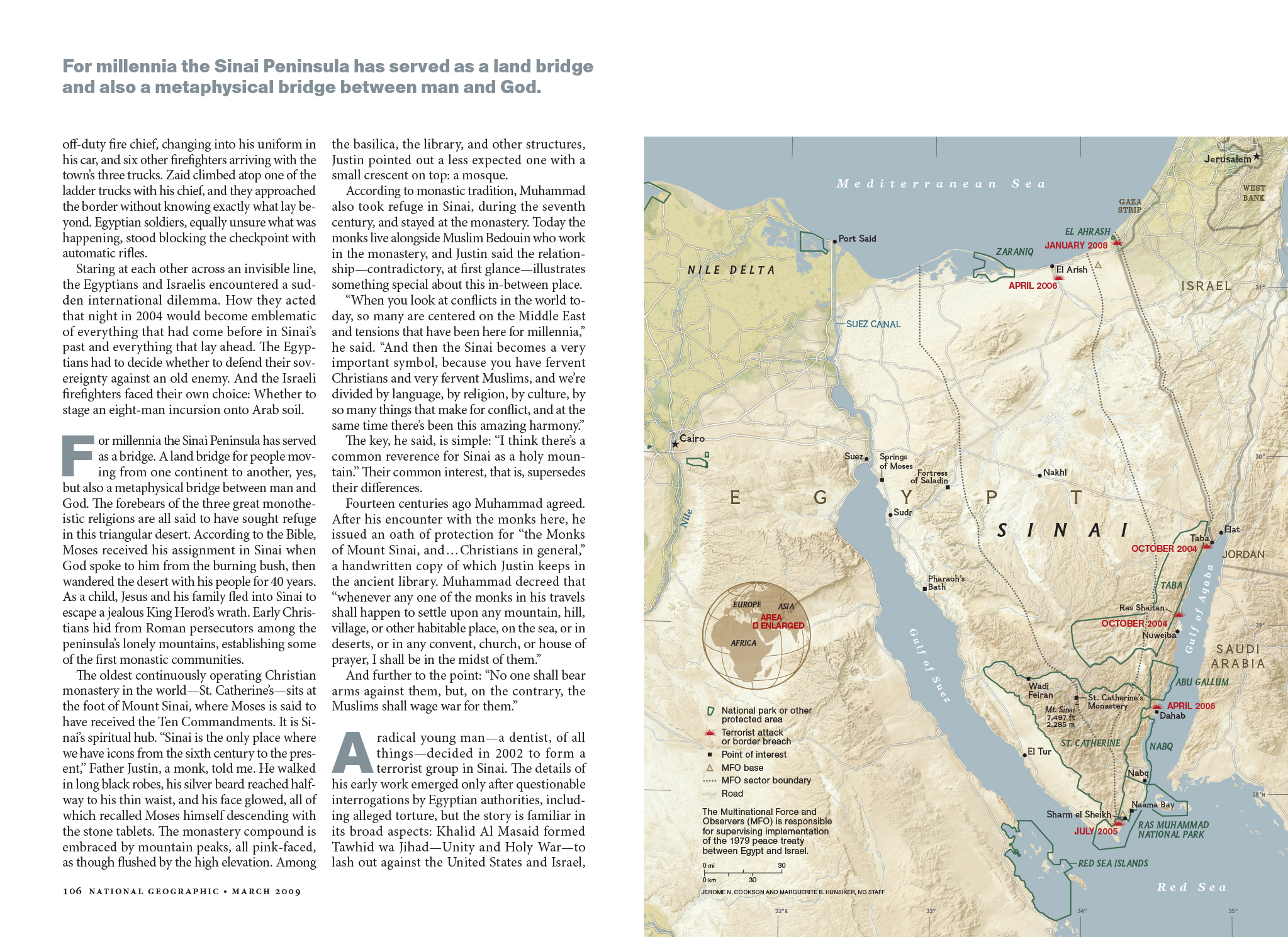THE SINAI: A separate pEAce

A tourist wades in the tranquil waters of the Gulf of Aqaba along the Sinai coast as Saudi Arabia rises in the distance.
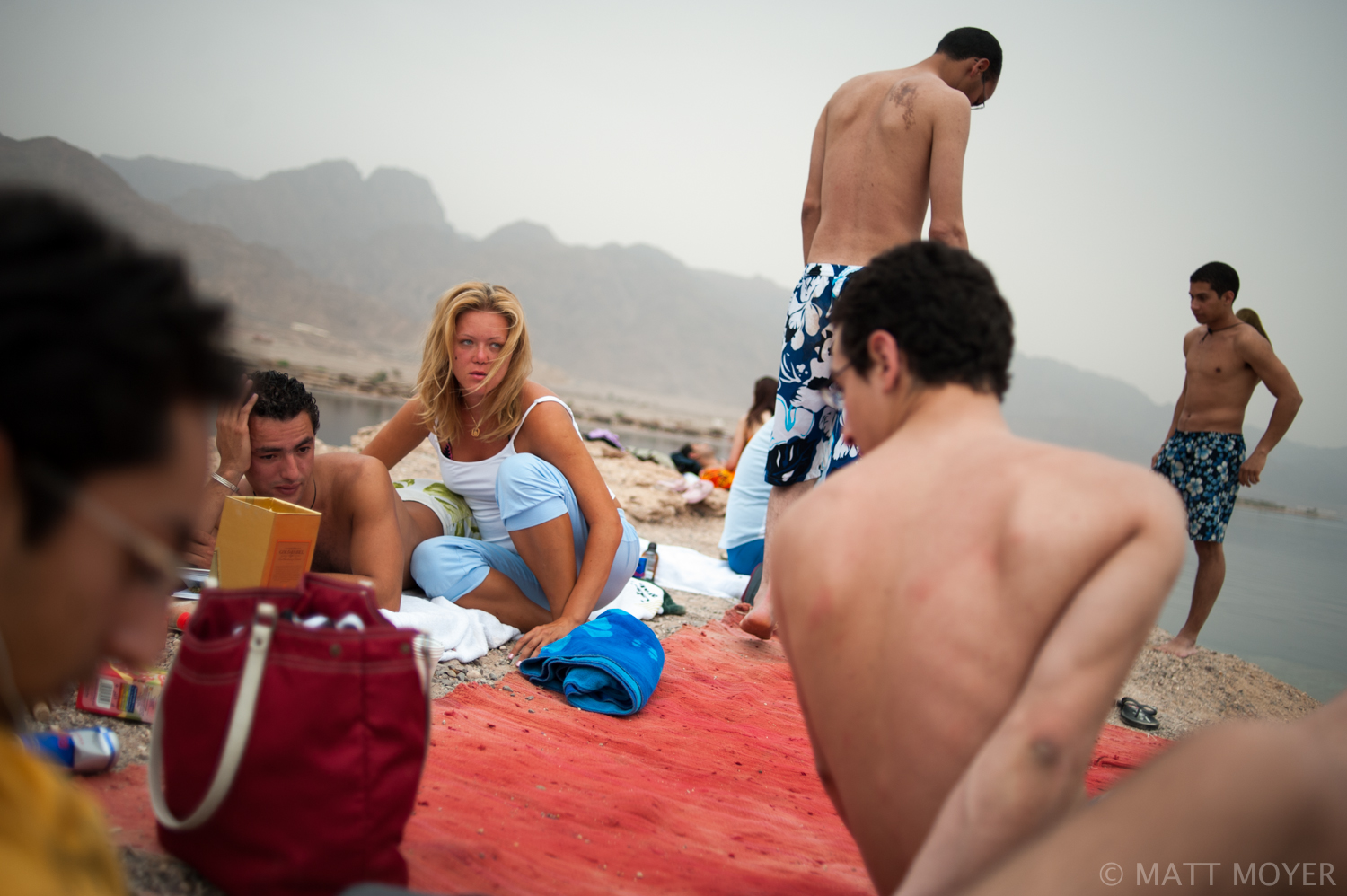
A European woman sits on the beach with her Egyptian boyfriend and other Egyptian men near Nuweiba, Egypt.
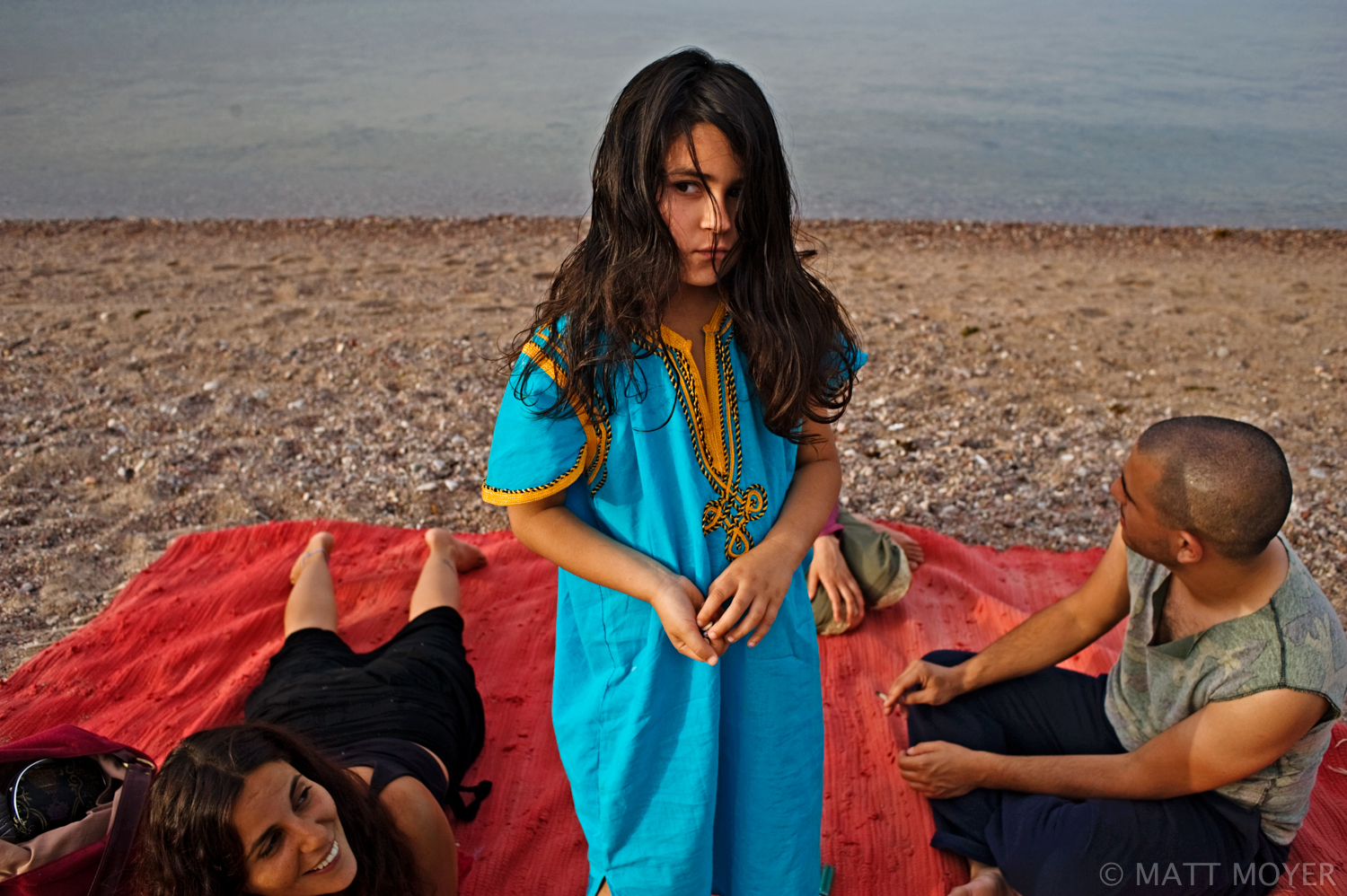
Israeli tourists enjoy relaxing while vacationing at camp Ras Shitan during the Passover holiday near the city of Nuweiba in the Sinai, Egypt. Ras Shitan was attacked by a suicide bomber in 2004.
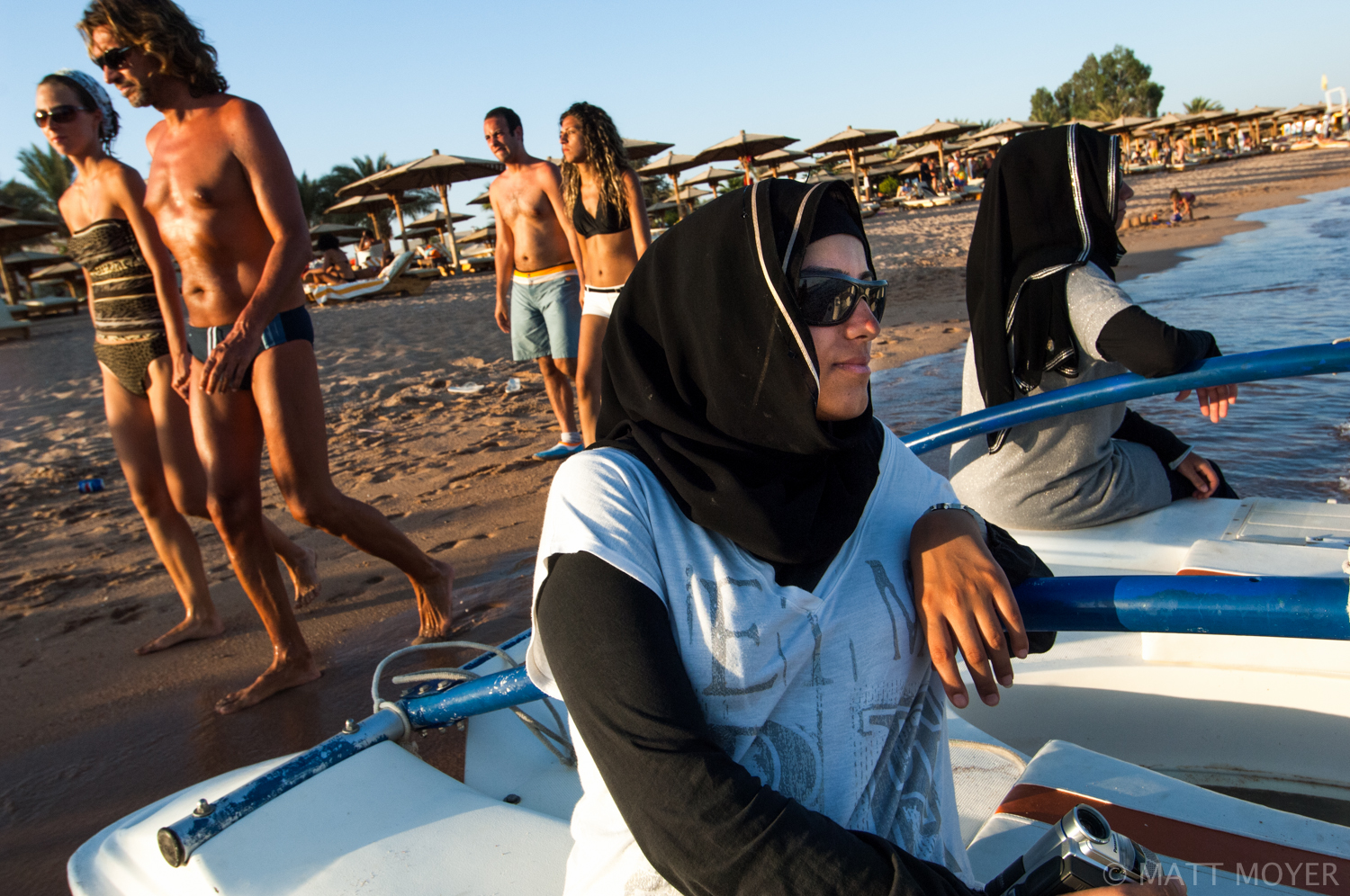
Two Jordanian sisters sit along the beach in Nama Bay, Egypt as European tourists stroll past in the Sinai. The Sinai is knows as a place where diverse cultures mix.
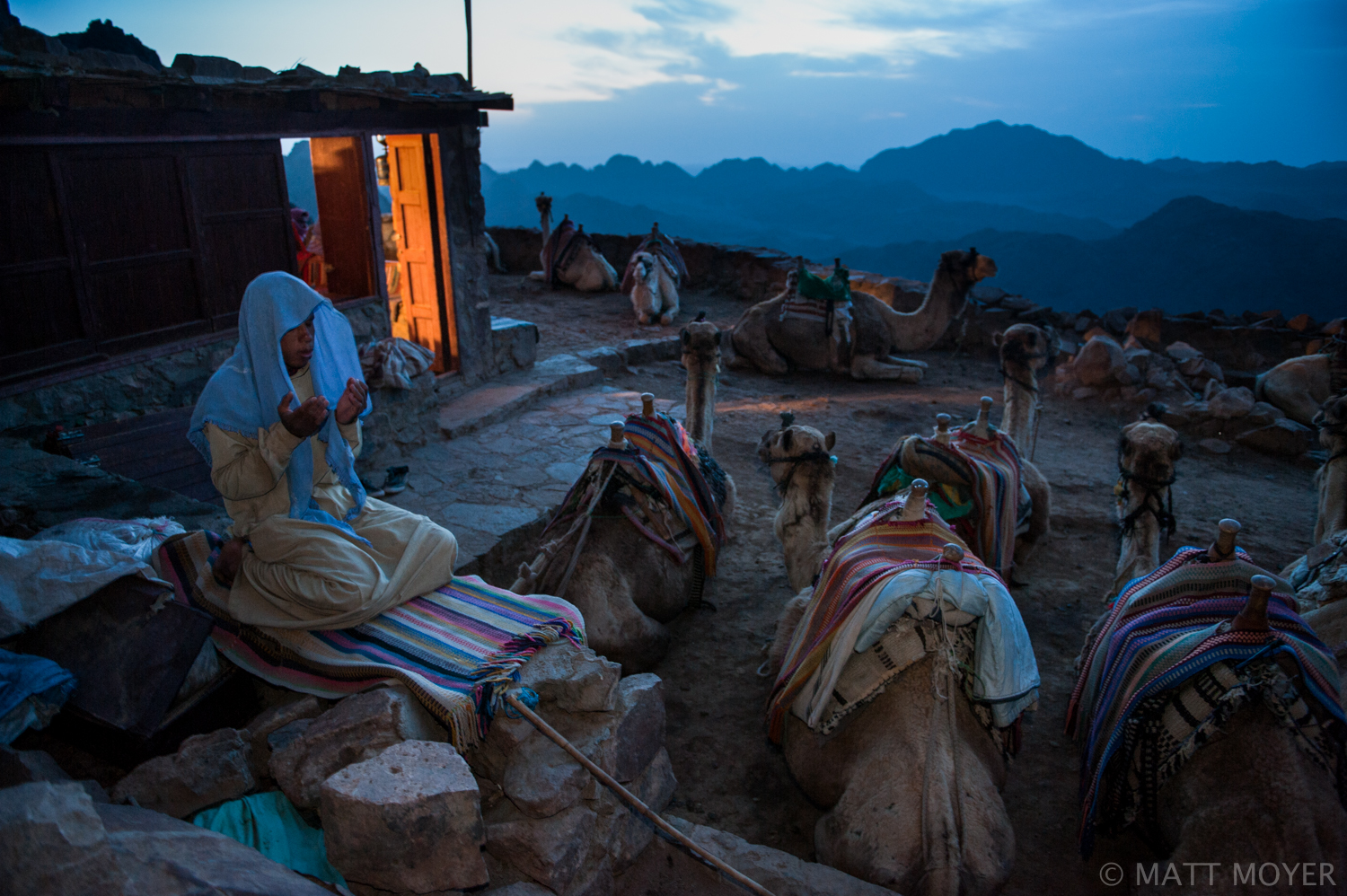
A young bedouin man prays in the pre-dawn hours near the summit of Mount Sinai near St. Catherine, Egypt.
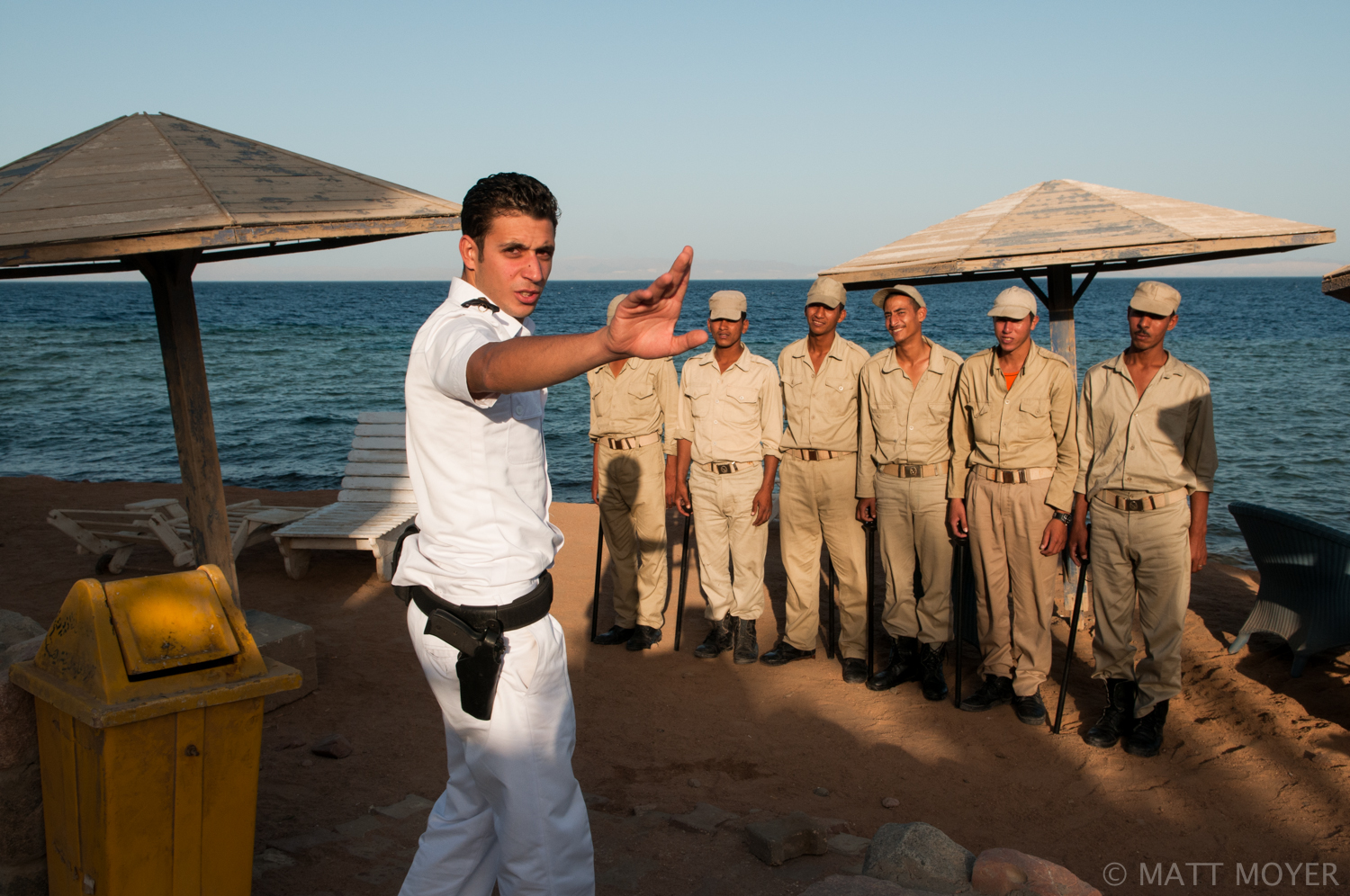
A Mubarak era police officer stops the photographer from taking a pictures in Dahab, Egypt.
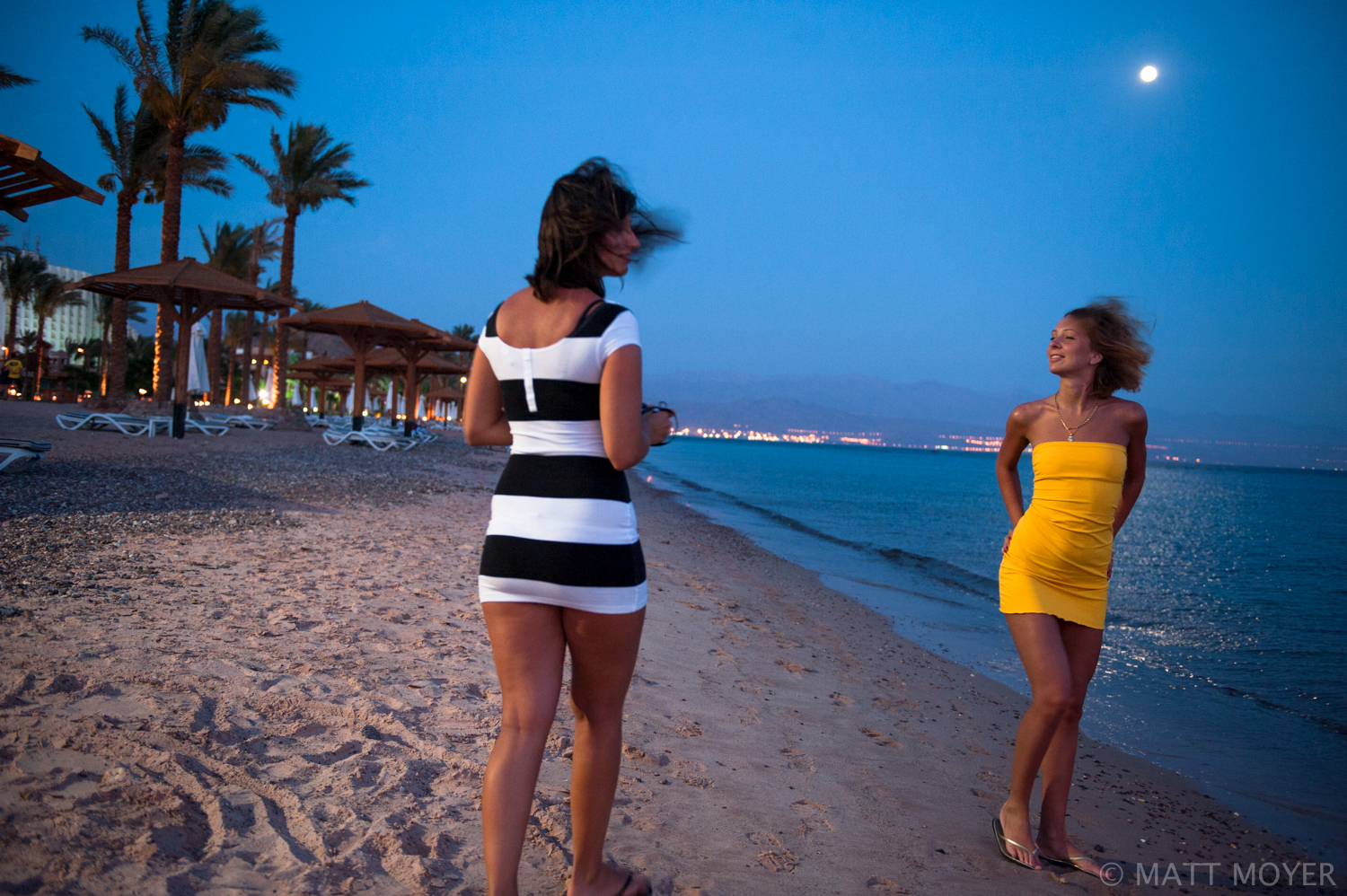
Two women from Russia take pictures of each other on a beach near the Taba Hilton.
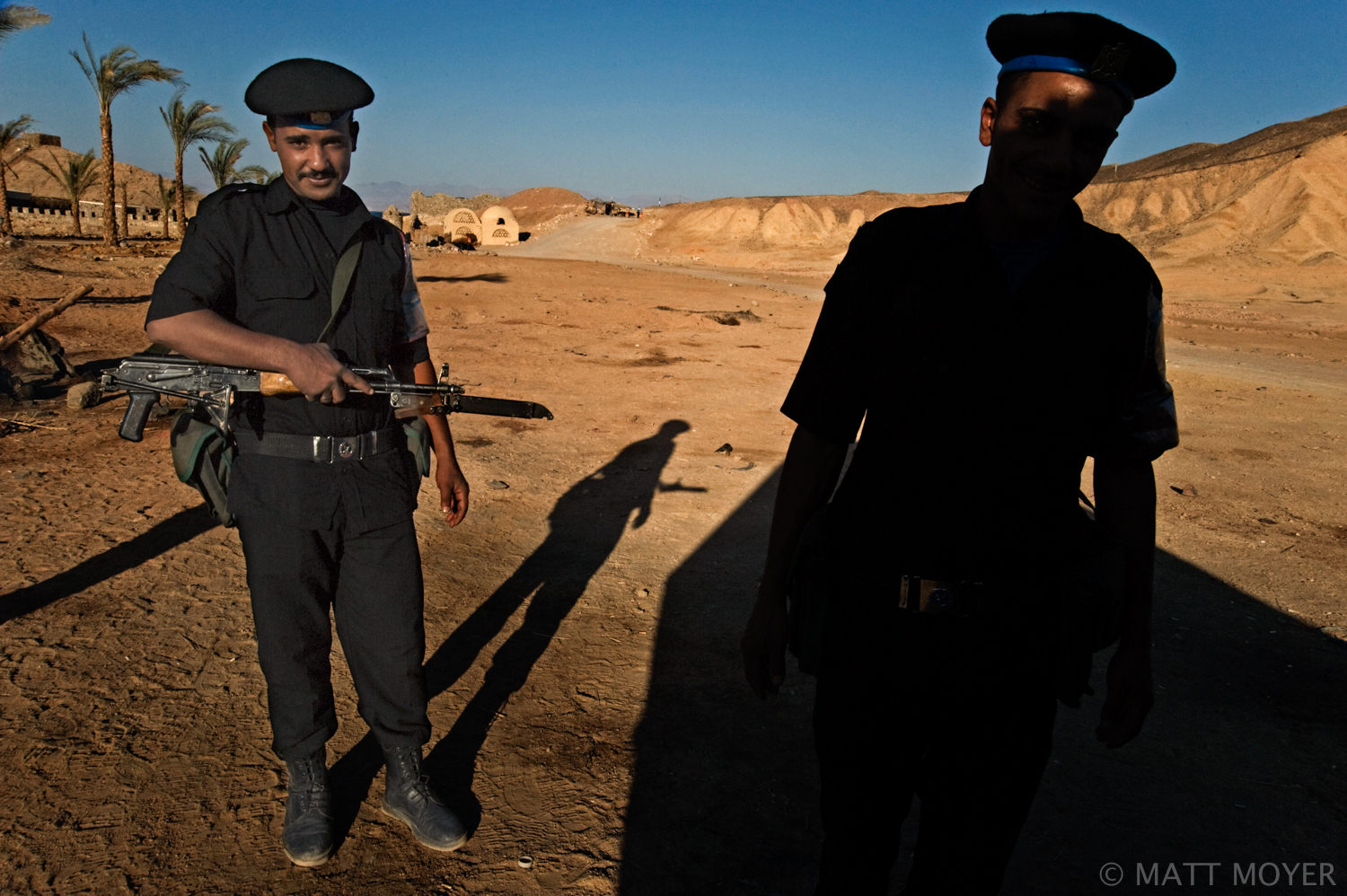
Egyptian police stand in front of Ras Shitan camp near Nuweiba, Egypt in the Sinai. Ras Shitan was attacked by a suicide bomber in 2004 and is frequented by Israelis and Egyptians alike.
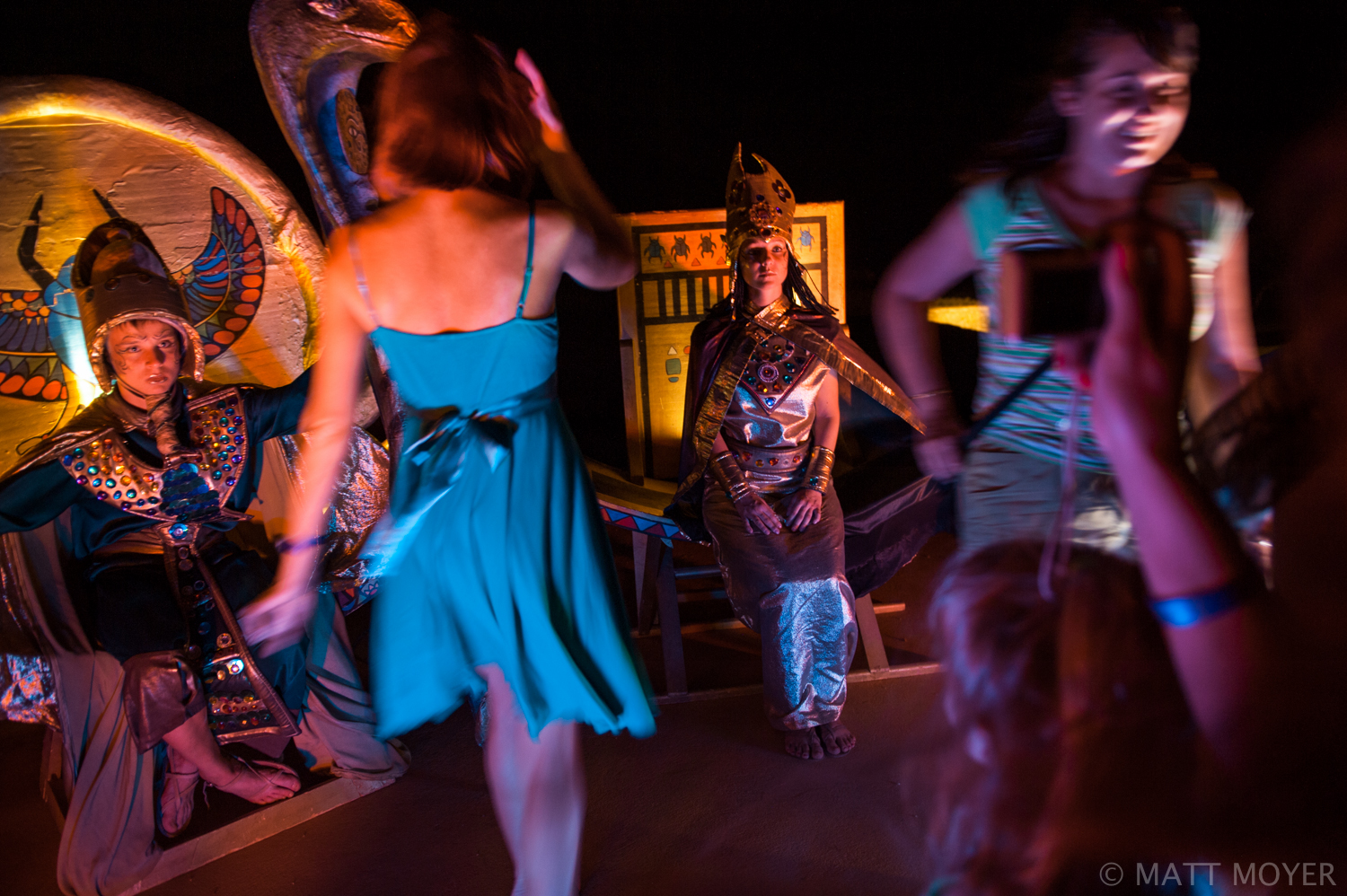
Tourists attend a kitsch filled dinner on the outskirts of Sharm El Sheikh. Members of a dance troupe dress up as King Tut and Cleopatra while posing for pictures with tourists.
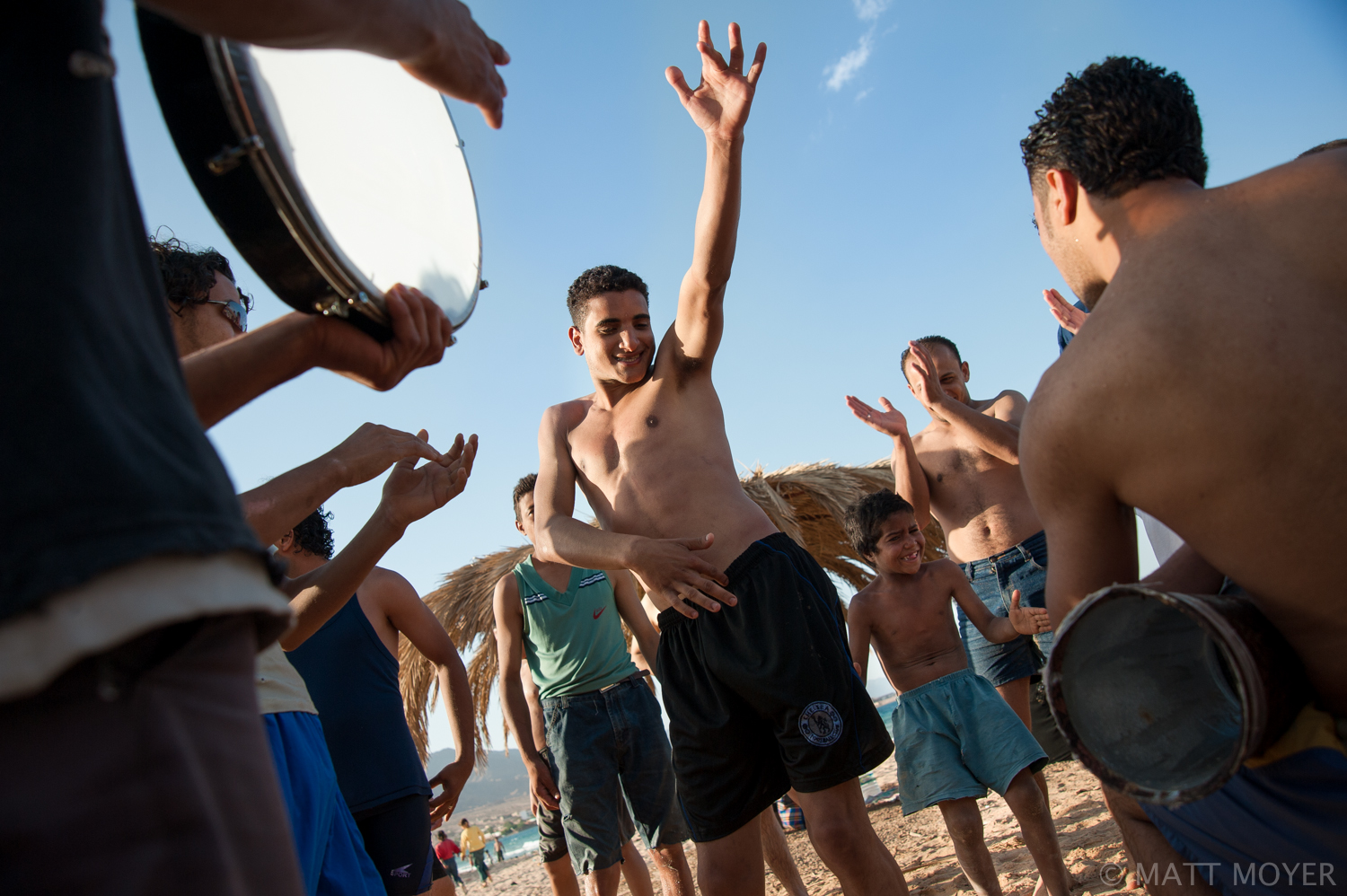
A group of Egyptians, many of whom work in the tourism industry, belly dance at a public beach on a day off in Nuweiba, Egypt.
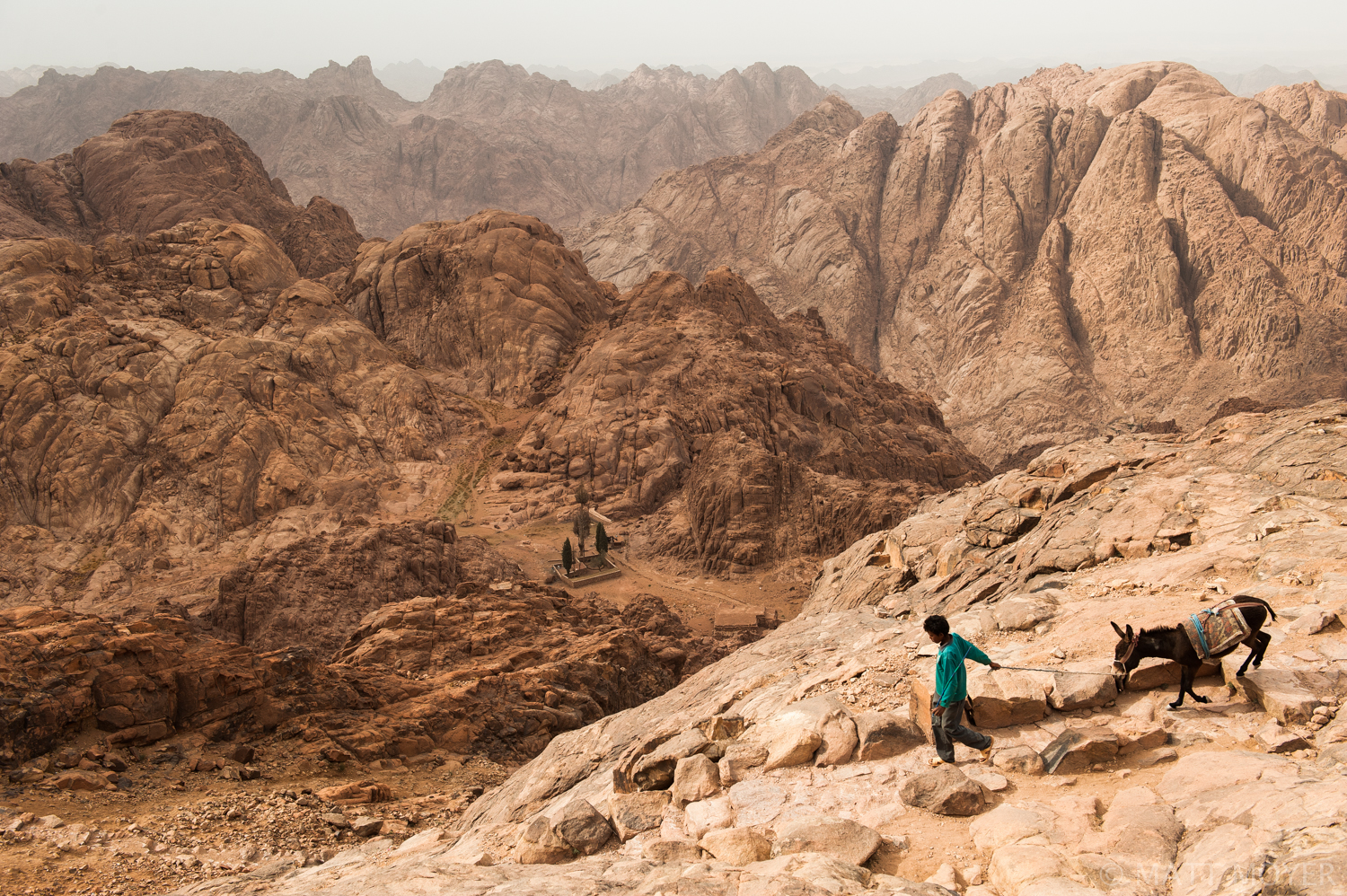
A bedouin boy guides a donkey from the summit of Mount Sinai after delivering supplies to shops along the stairs to the summit.
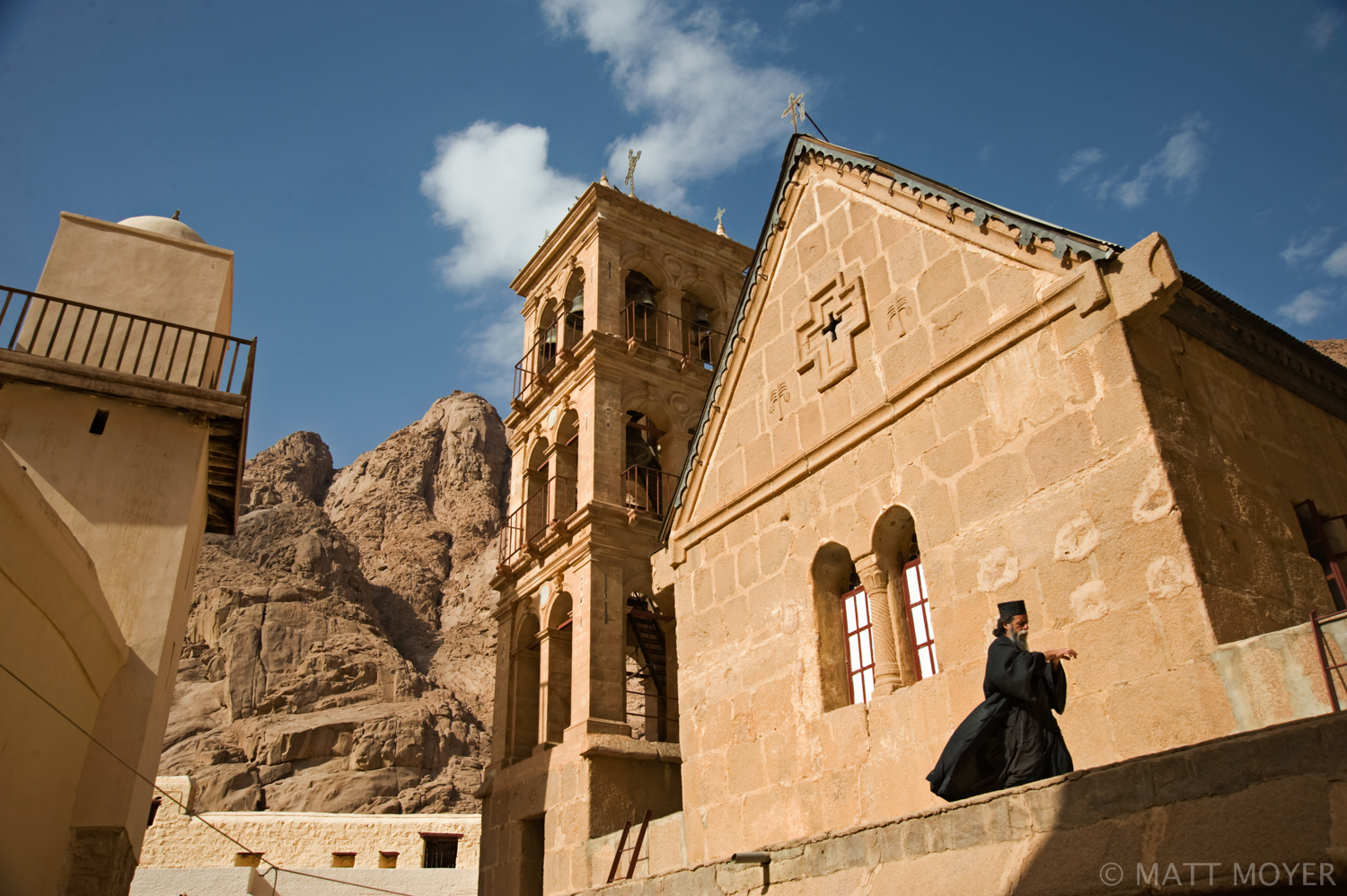
A monk walks in front of the main chapel inside the walls of St. Catherine's Monastery.
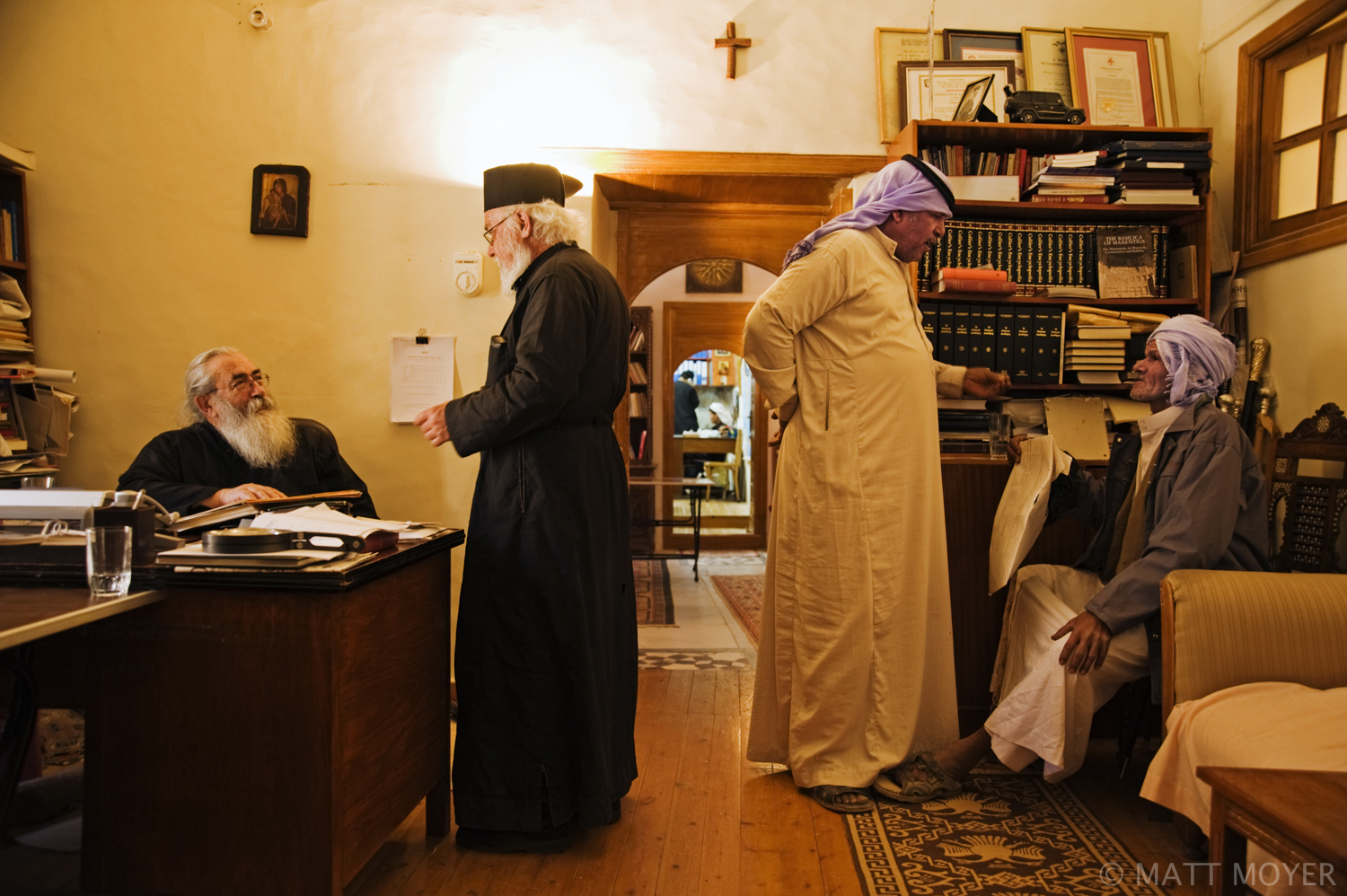
Archbishop Damianos, far left, speaks with another monk as bedouin tribal chief, Mohammed Oude, second from right, speaks with Salam Hussein. Hussein brought X-rays of his injured leg for the archbishop to look at. The bedouin work closely with the monks and the Monastery and will often come to the archbishop for help and guidance.
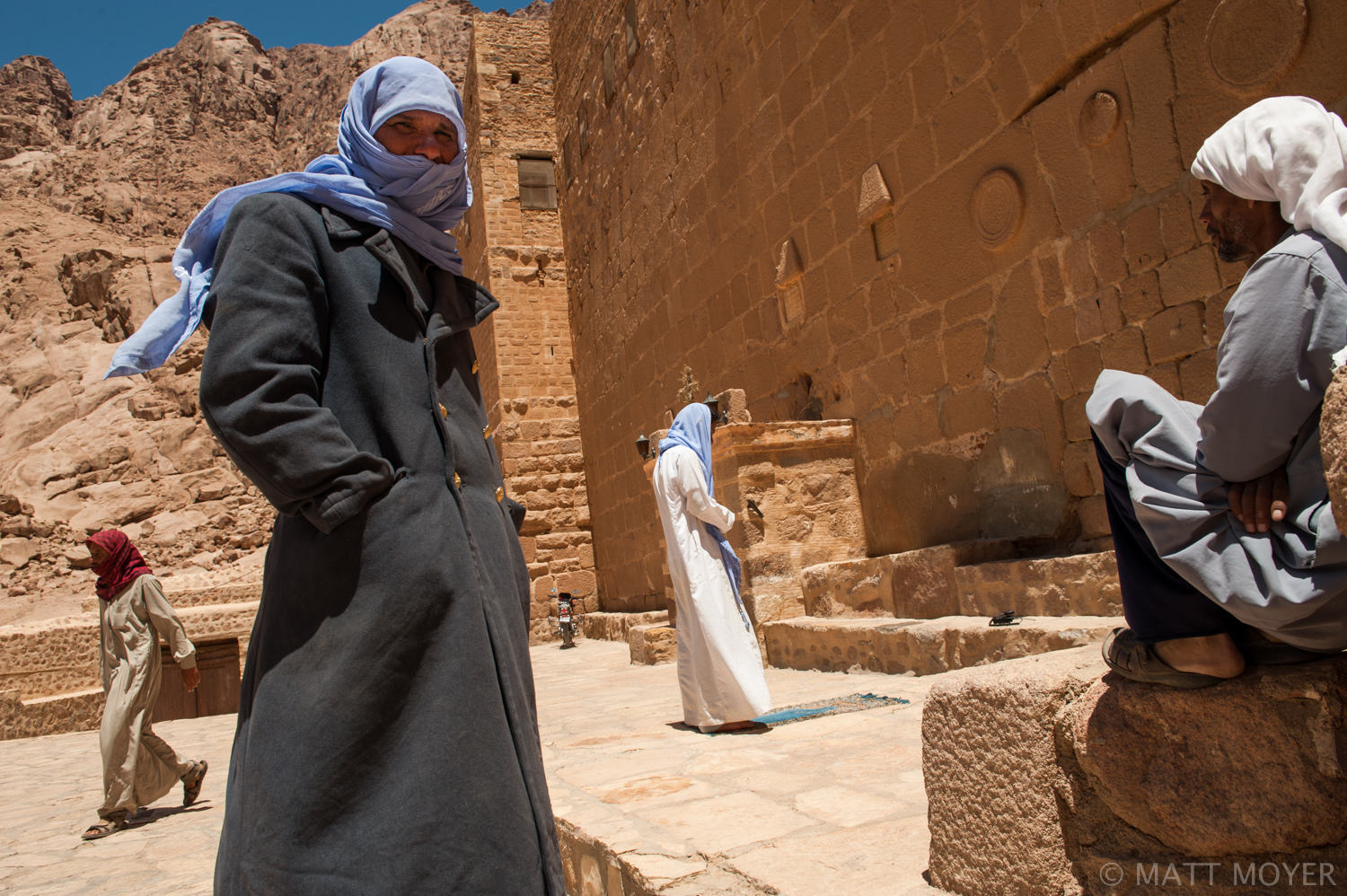
A bedouin man prays outside the entrance of the Monastery of St. Catherine as other bedouins look on in Saint Catherine Egypt.
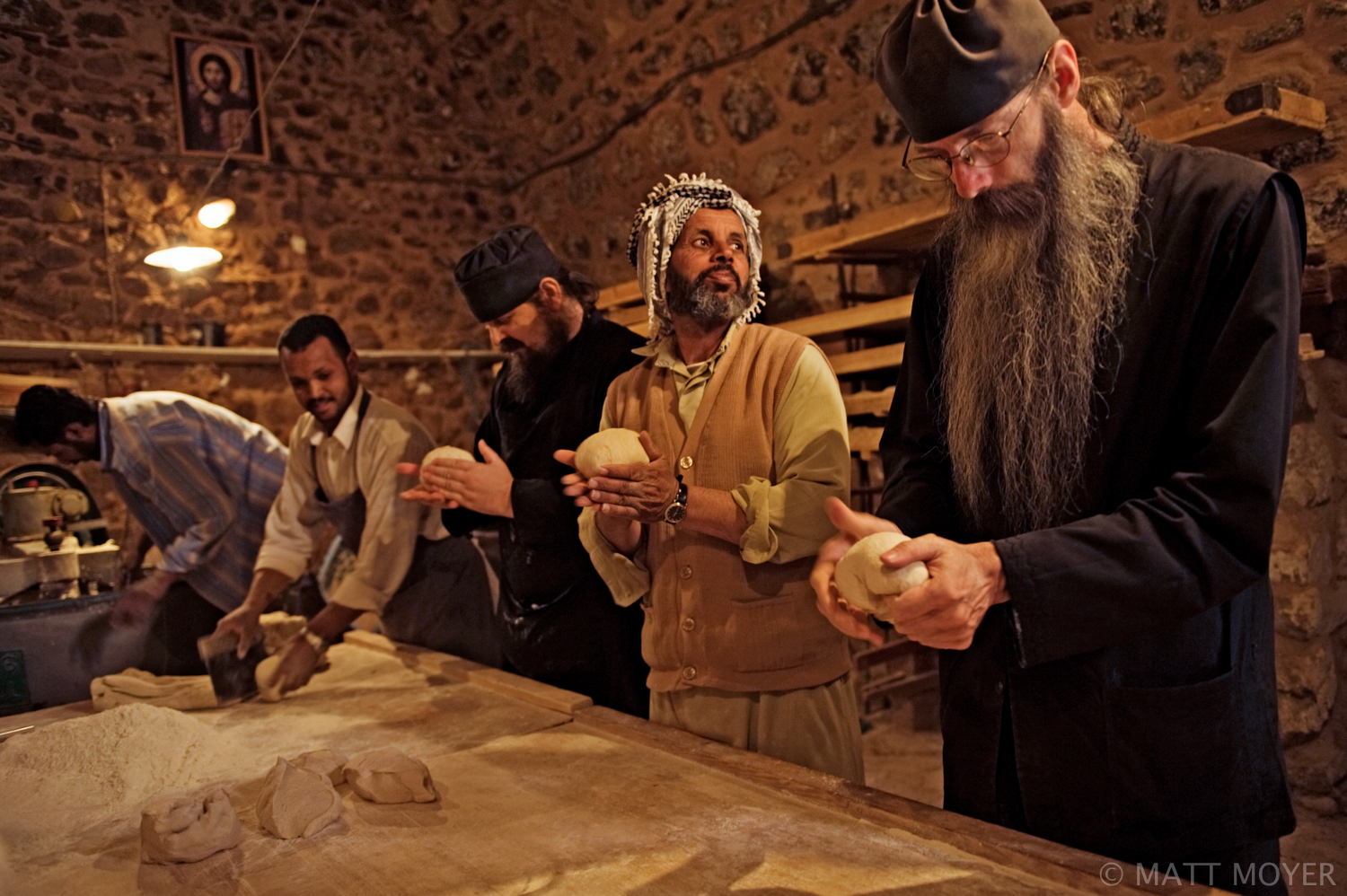
Christian monks shape bread dough into loaves with several Bedouins at the Monastery of St. Catherine in Egypt's Sinai peninsula.
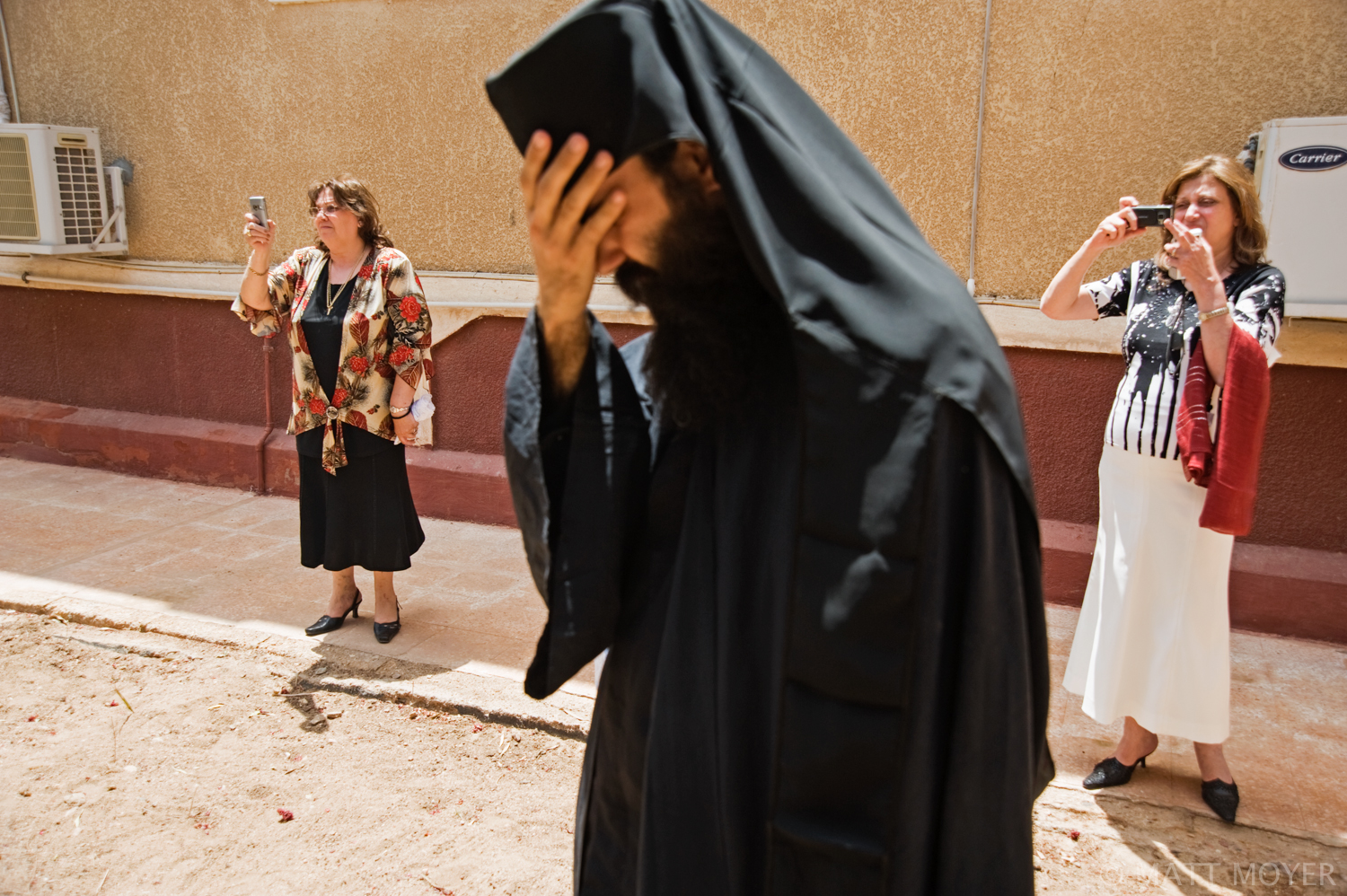
A monk of the Saint Catherine Monastery reacts as tourist take photographs of a religious procession. Tens of thousands of tourist descend upon the ancient monestary every year.
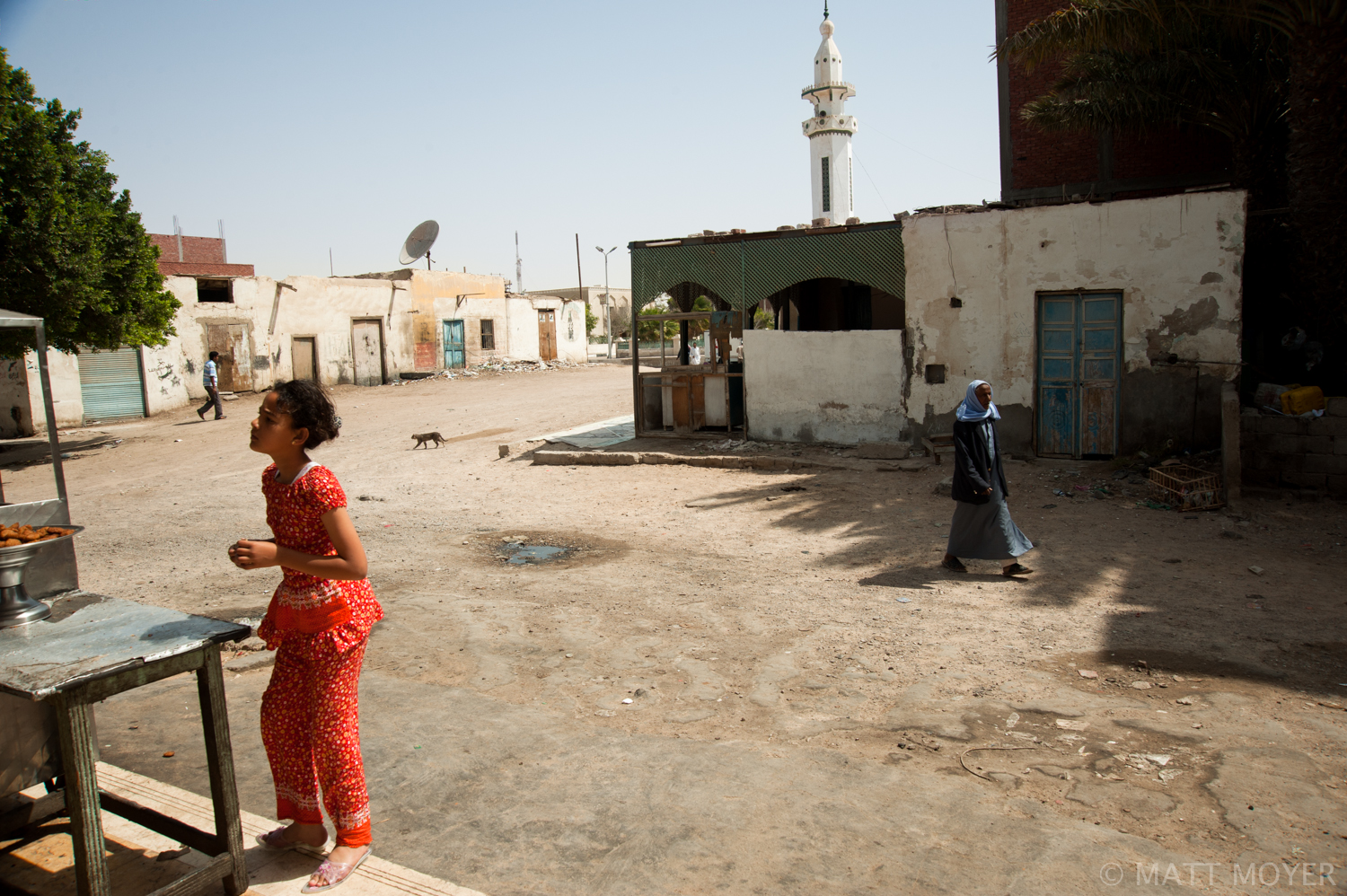
Egyptians walk in the street in the Sinai city of El Tur.
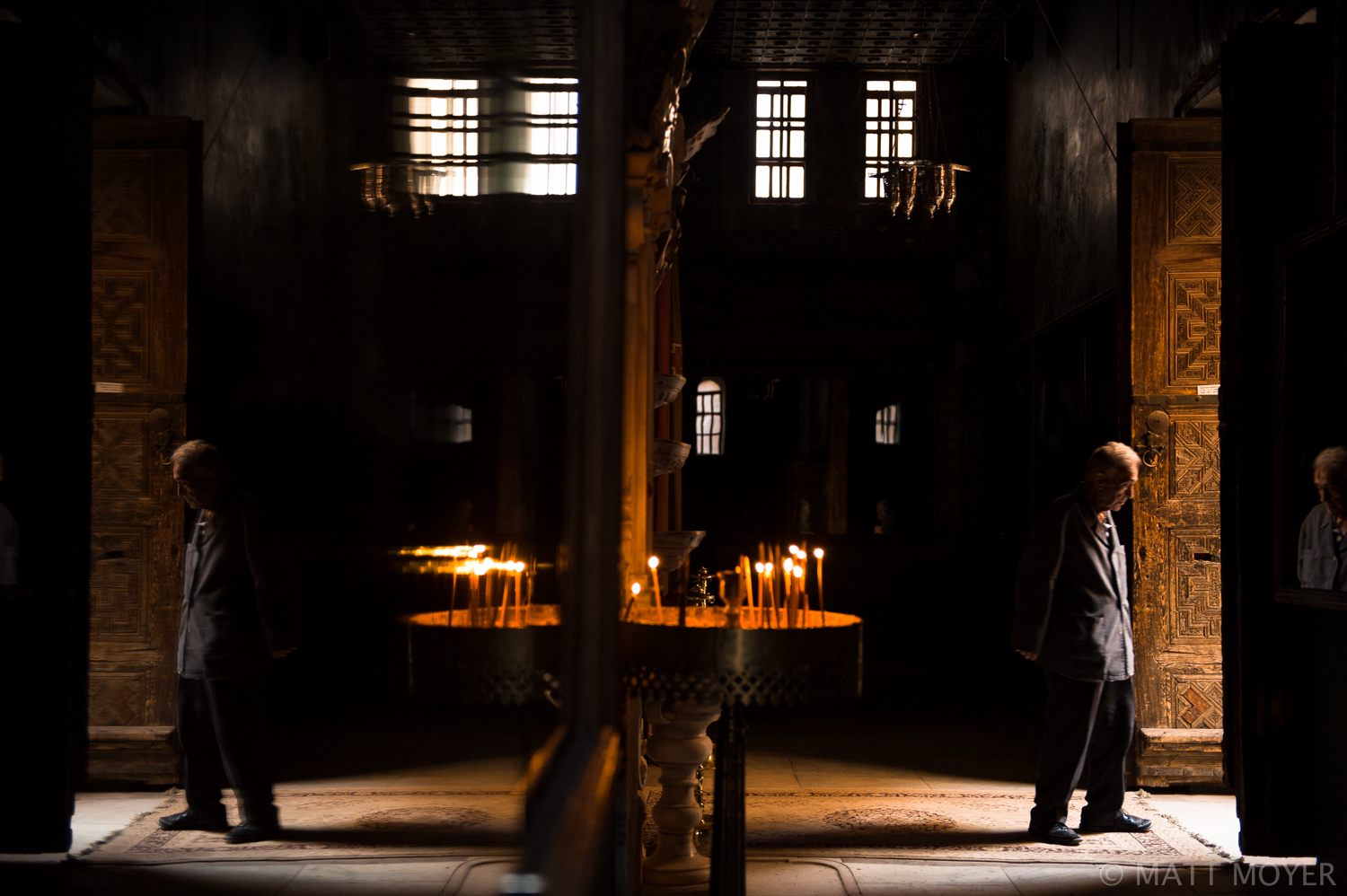
A man walks toward the doorway of the main chapel inside St. Catherine Monaster
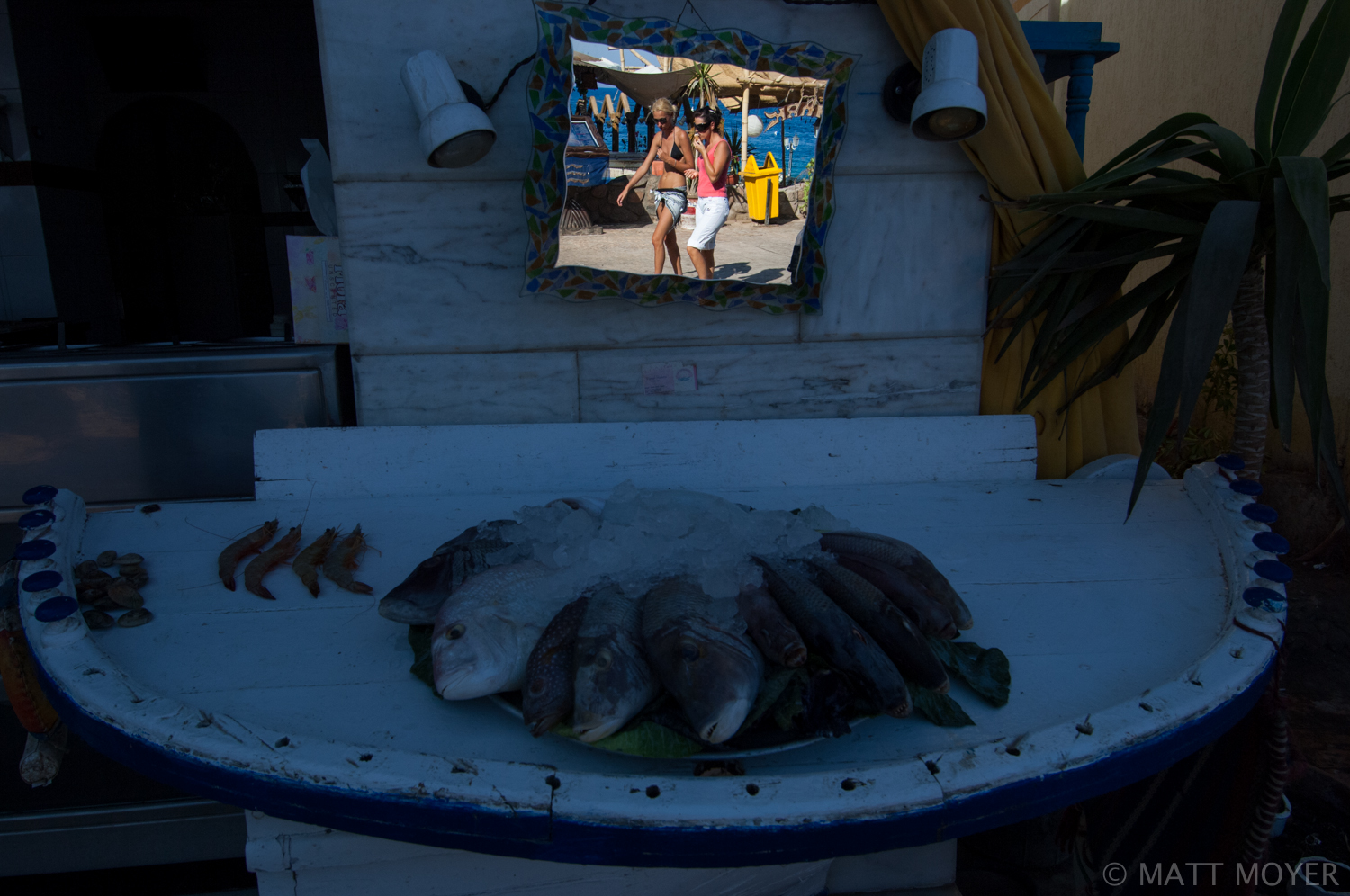
A mirror reflects passersby in Dahab, Egypt.
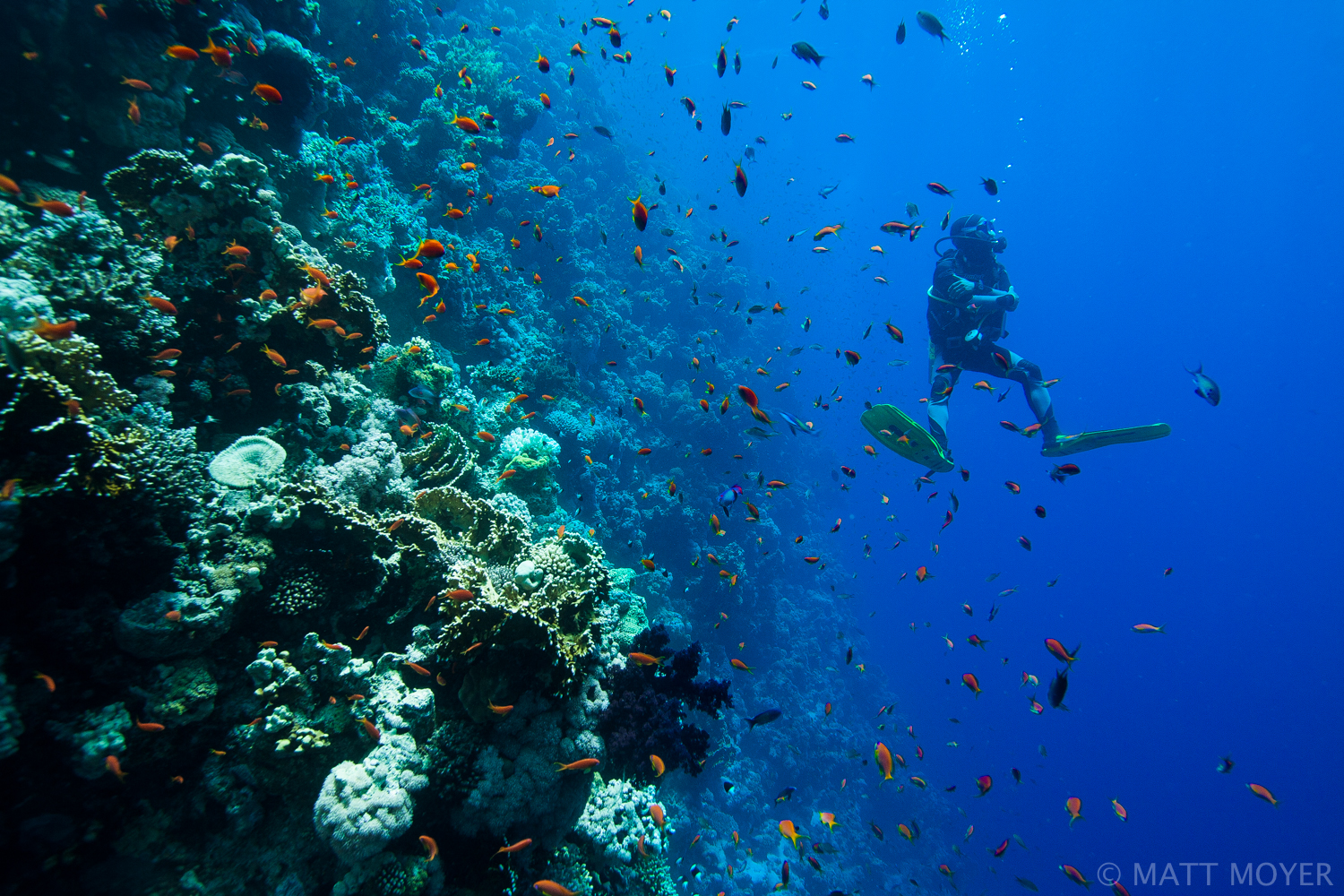
A scuba diver drifts along Jackson Reef near Sharm El Sheikh, Egypt.

A swimmer enjoys the water in Sharm El Sheikh, Egypt.
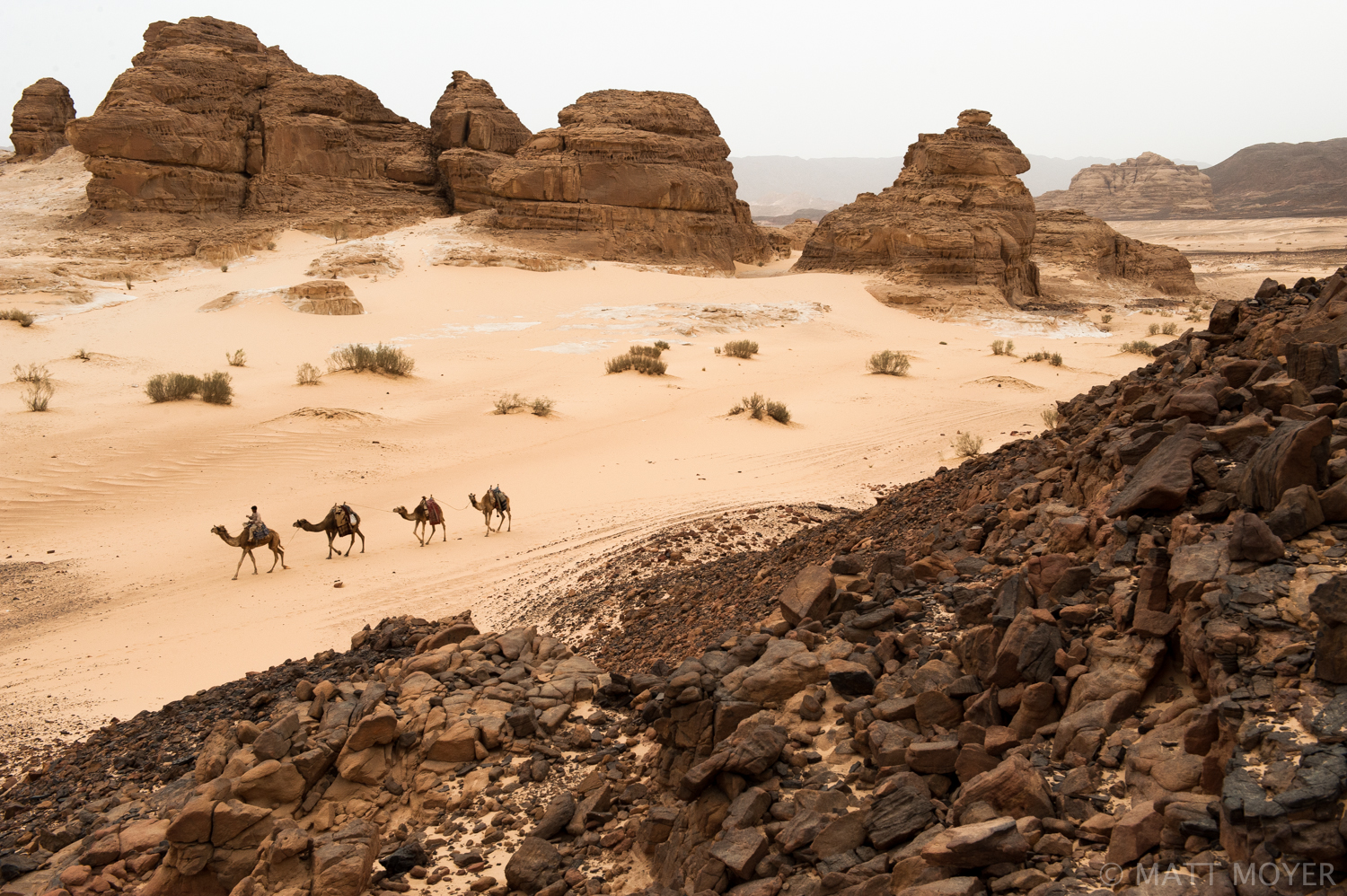
A bedouin's leads his camels through the landscape of the Sinai near St. Catherine.
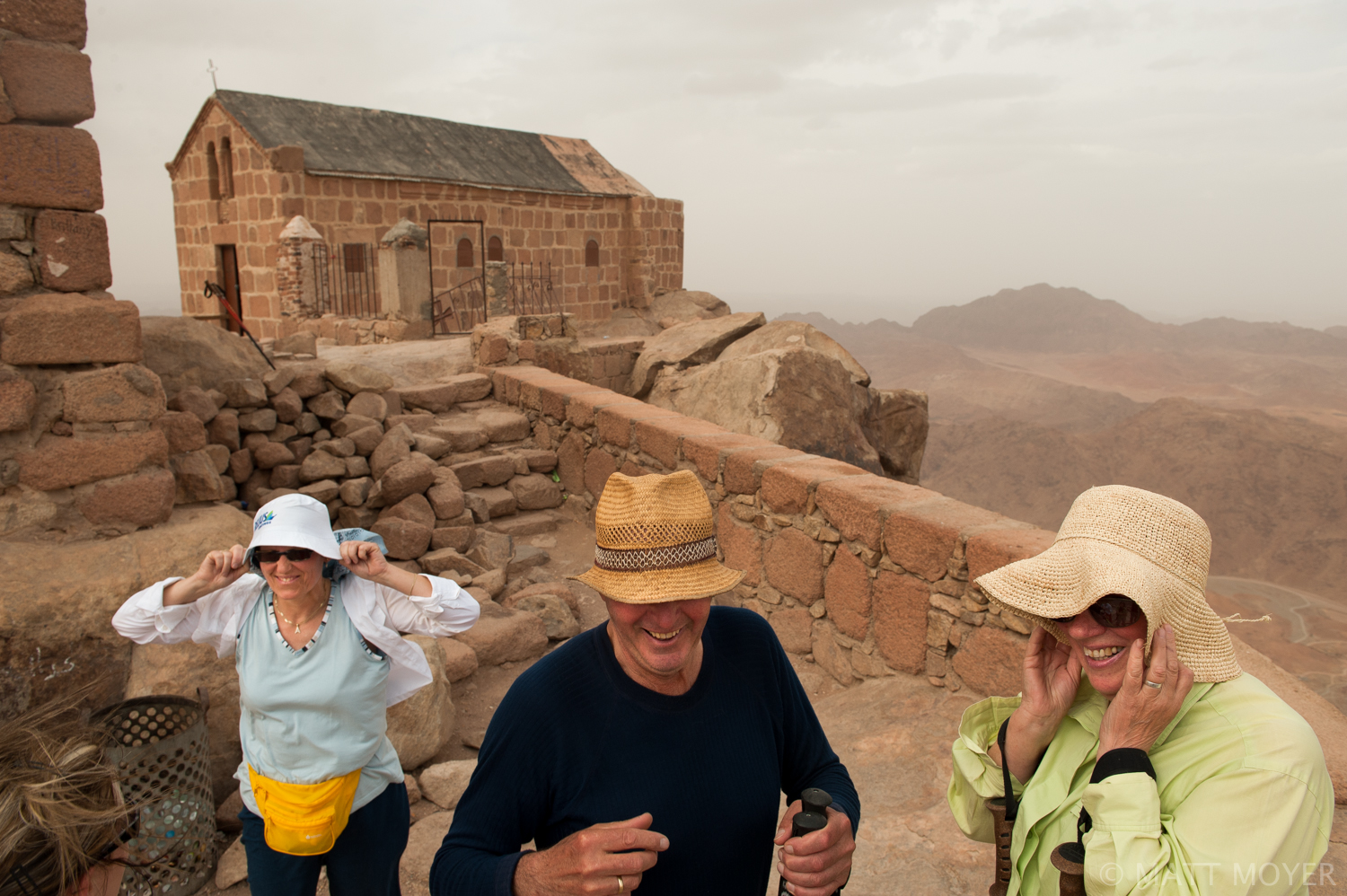
Tourists battle the wind atop the biblical Mount Sinai in Egypt.
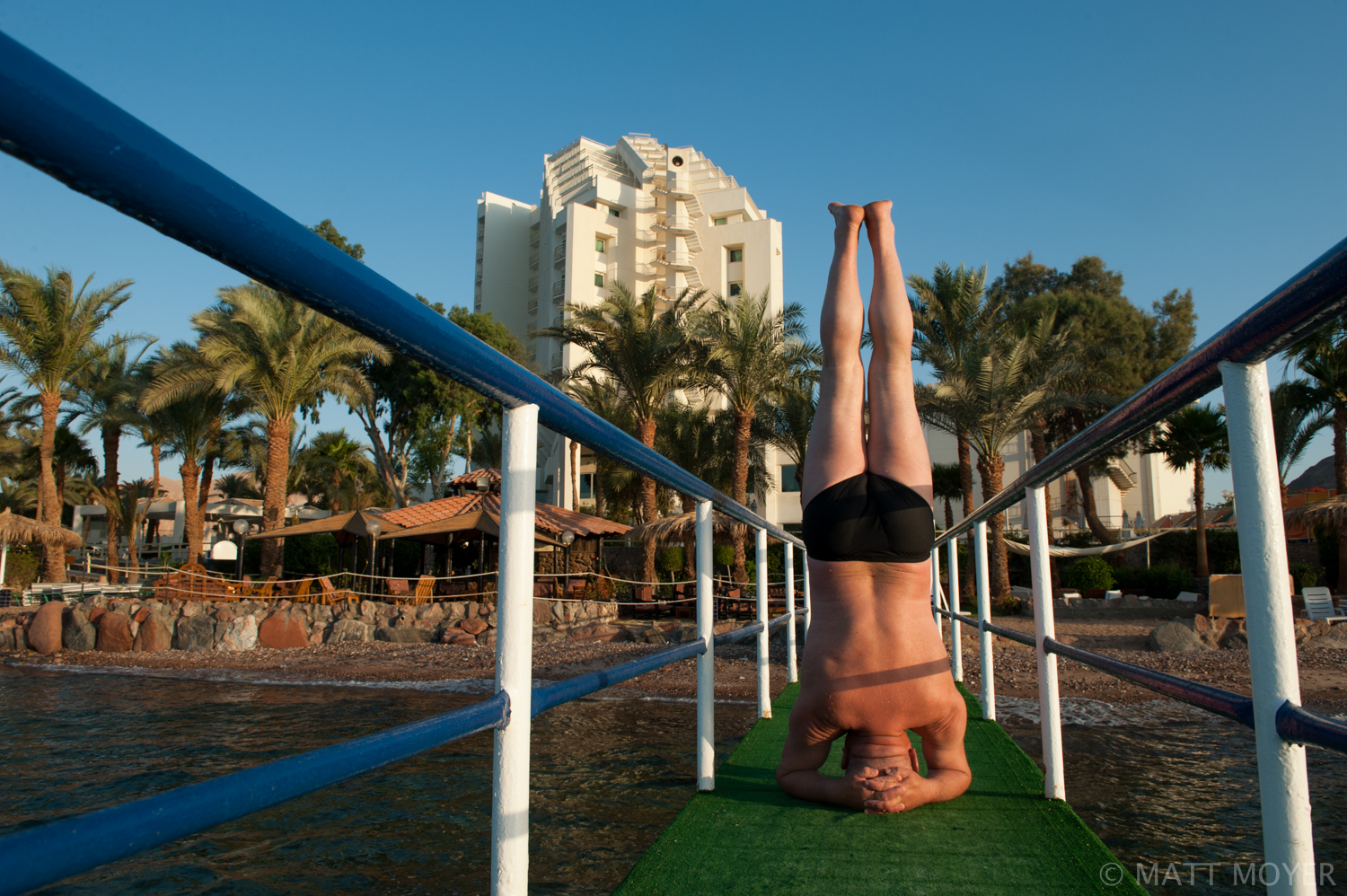
A tourist does a headstand on a jetty in front of the Taba Hilton in the Sinai.

A boy picks through garbage at a dump outside Nama Bay, Egypt as a bedouin allows his camel to eat some of the trash. Much of the refuse comes from tourist resorts located a short distance away.
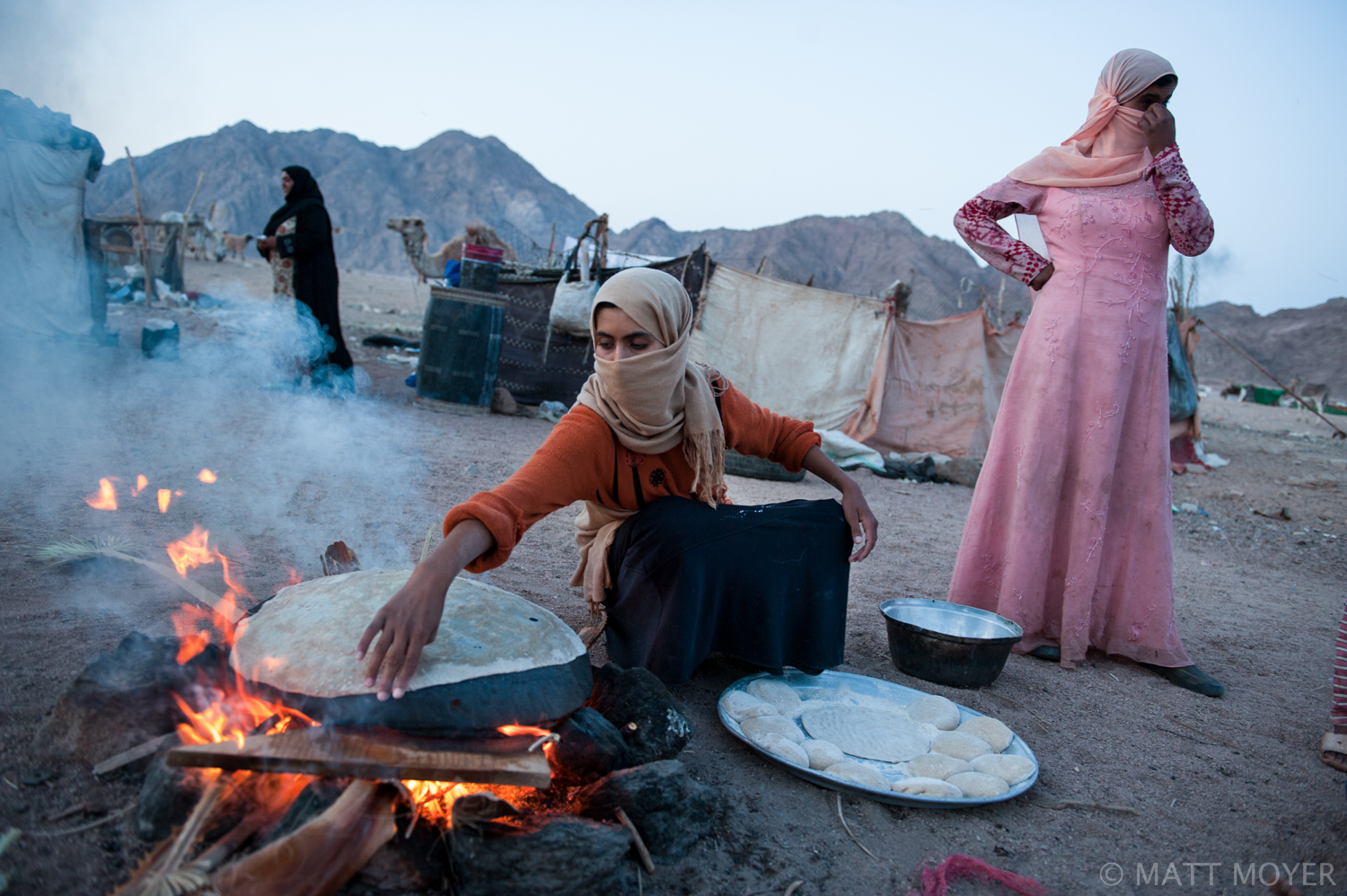
Bedouin women make bread over an open fire. The bedouin live in a makeshift squatter camp near a garbage dump on the outskirts of Sharm El Sheikh. A seven year drought has forced the bedouin down from their traditional mountain homes. Discrimination by Egyptian business owners and operators in Sharm El Sheikh leave the Bedouin no jobs and little to no income. The Bedouin have resorted to sifting through the garbage thrown out by tourists to feed themselves and their livestock.

Members of the Mizena Bedouin tribe meet for an annual celebration in honor of their early ancestors near St. Catherine, Egypt. The Bedouin visit with many of their friends and relatives, smoking the water pipe, drinking tea, and eating a feast all throughout the night. Many of the Bedouin of the Sinai have fallen on hard times. Most of them have been left out of the tourism boom and with the closed borders their nomadic ways are no longer possible. Due to lack of rain in the mountains many bedouin have had to move to garbage dumps to feed their camels and goats the tourist's trash. This is a deeply difficult thing for the traditionally proud Bedouin.
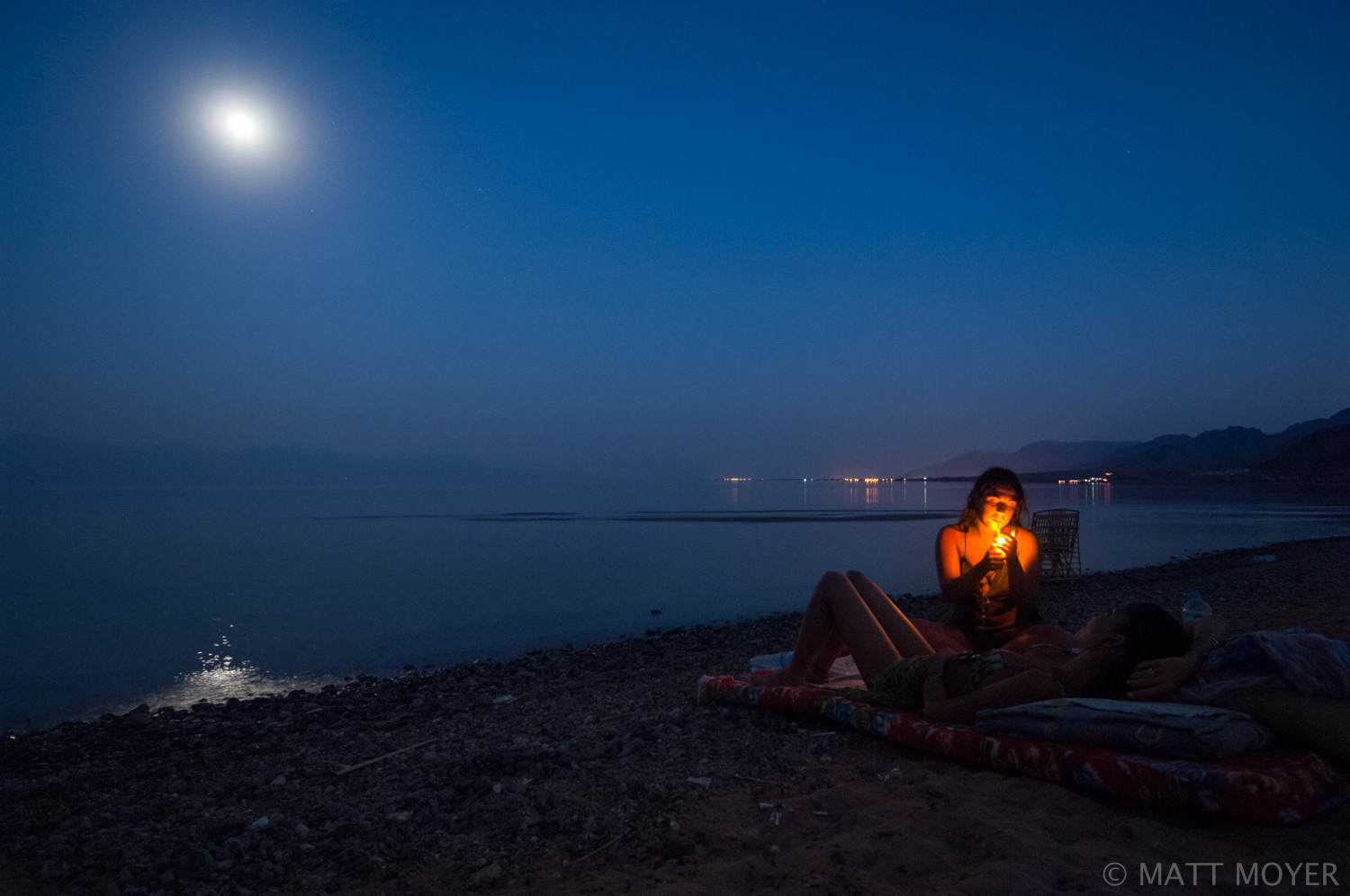
Hayley Shtienberg, 22, lights a cigarette with her friend Eilat Zukerman, both of Eilat, Israel while watching the moon rise over the Gulf of Aquba near Nuweiba, Egypt.
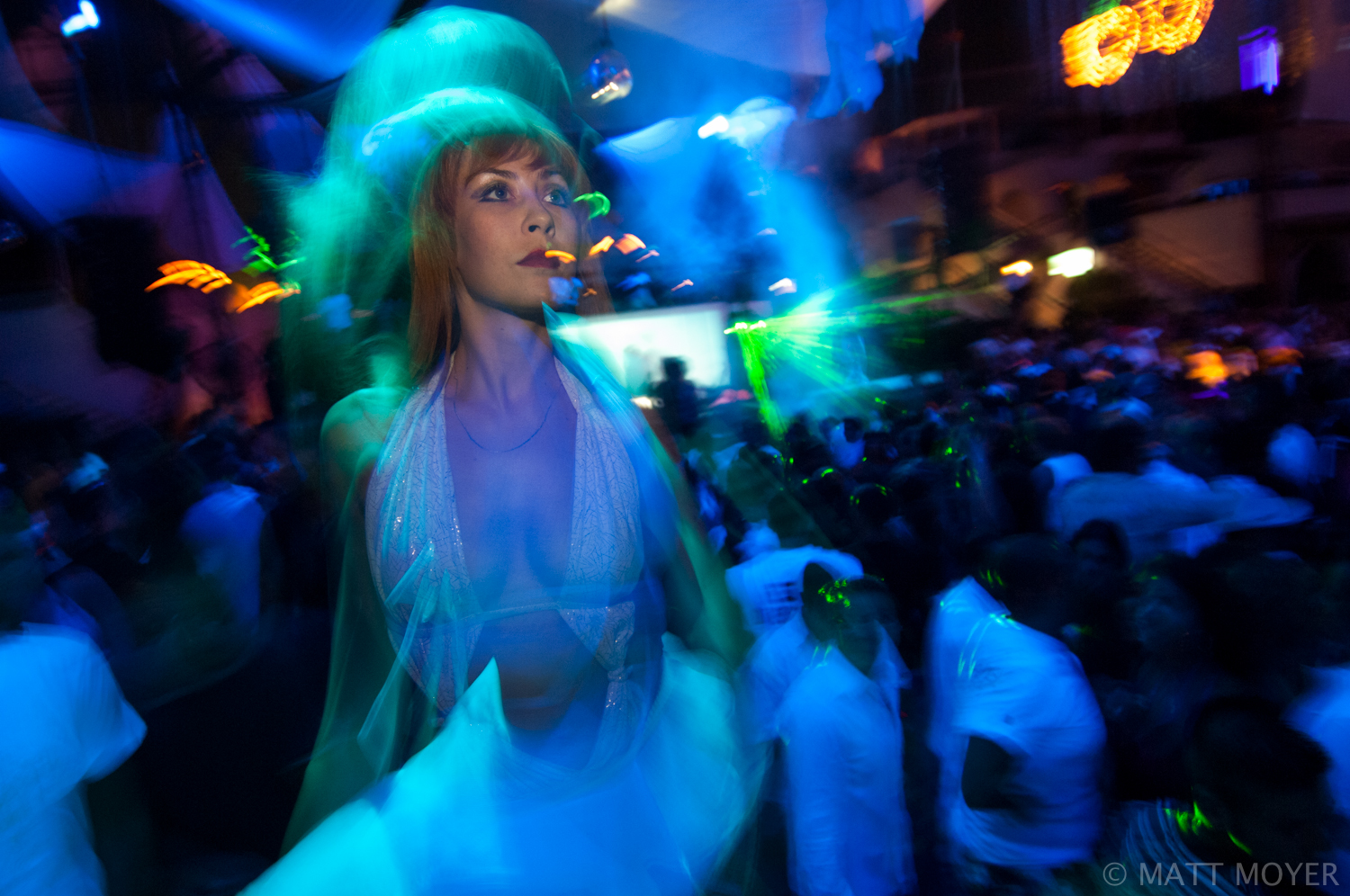
Revelers dance the night away at Pacha, an internationally known dance club, in Nama Bay, Egypt.
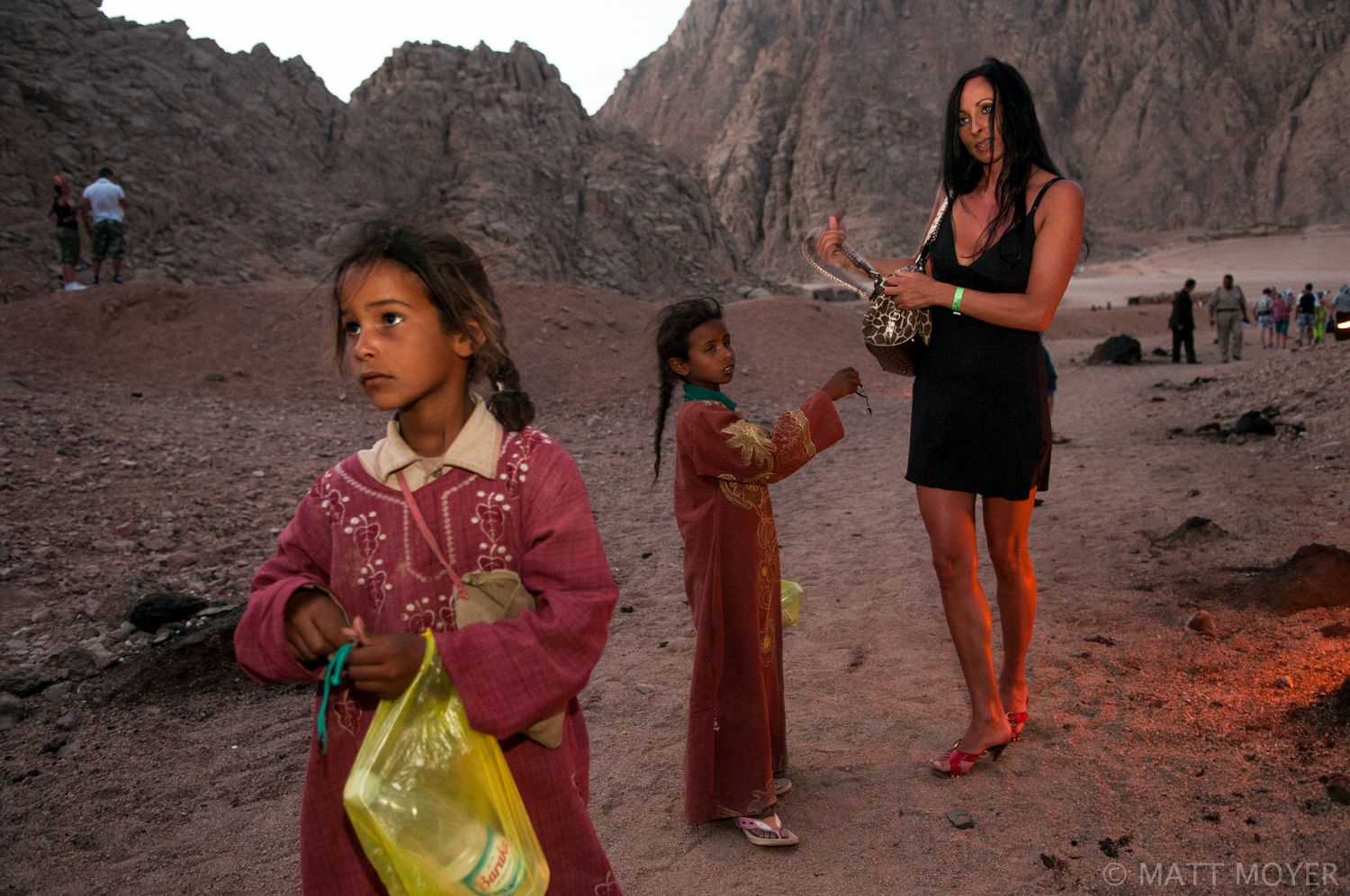
Bedouin children sell trinkets to wealthy tourists outside a "desert" party near Sharm El Sheikh.
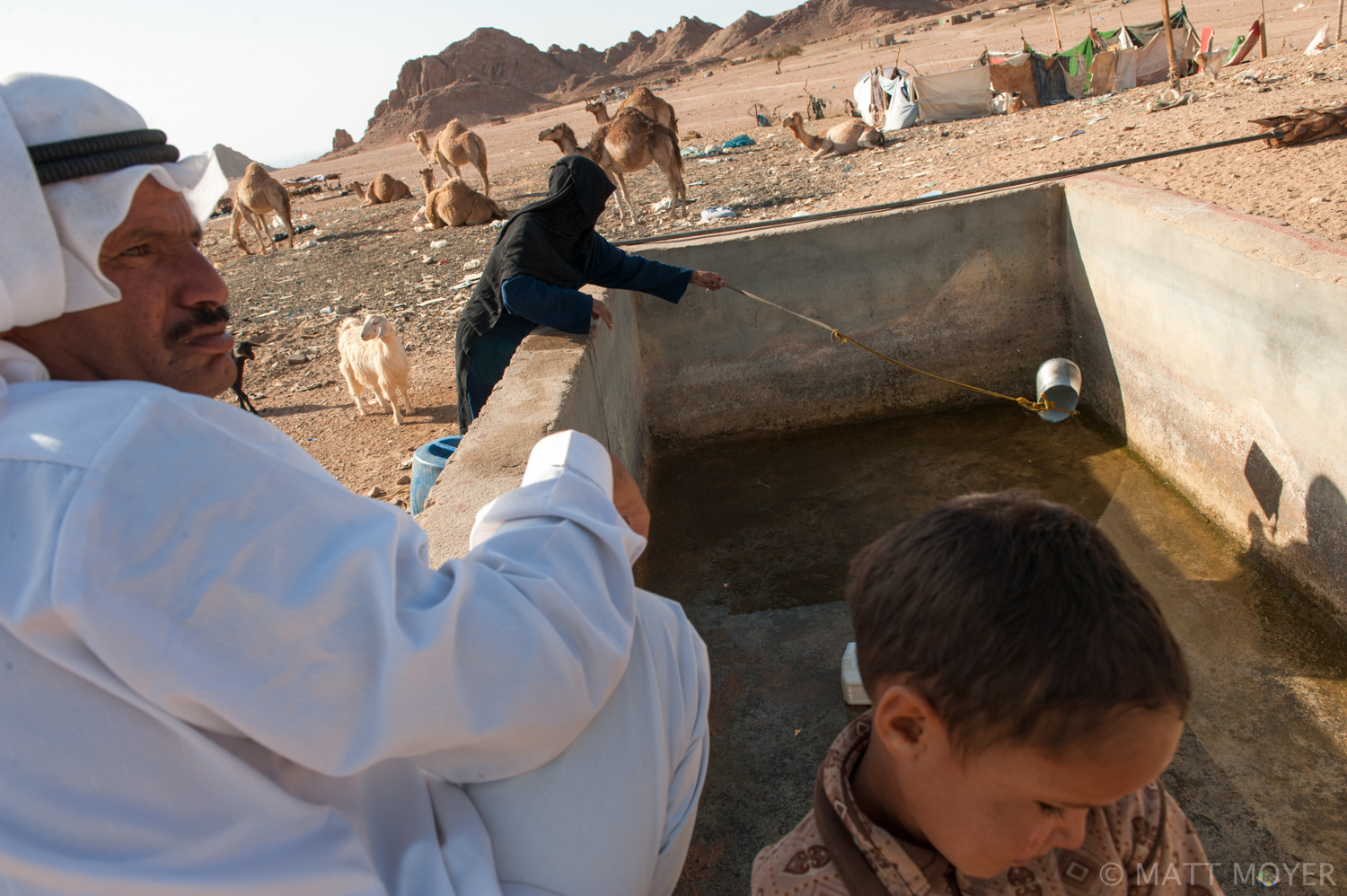
A bedouin woman throws a can to collect water from a cistern in the squatter camp she lives in. The bedouin live in a makeshift squatter camp near a garbage dump on the outskirts of Sharm El Sheikh. A seven year drought has forced the bedouin down from their traditional mountain homes. Discrimination by Egyptian business owners and operators in Sharm El Sheikh leave the Bedouin no jobs and little to no income. The Bedouin have resorted to sifting through the garbage thrown out by tourists to feed themselves and their livestock.

A sufi dancer performs above one of the main strips in Nama Bay, Egypt.
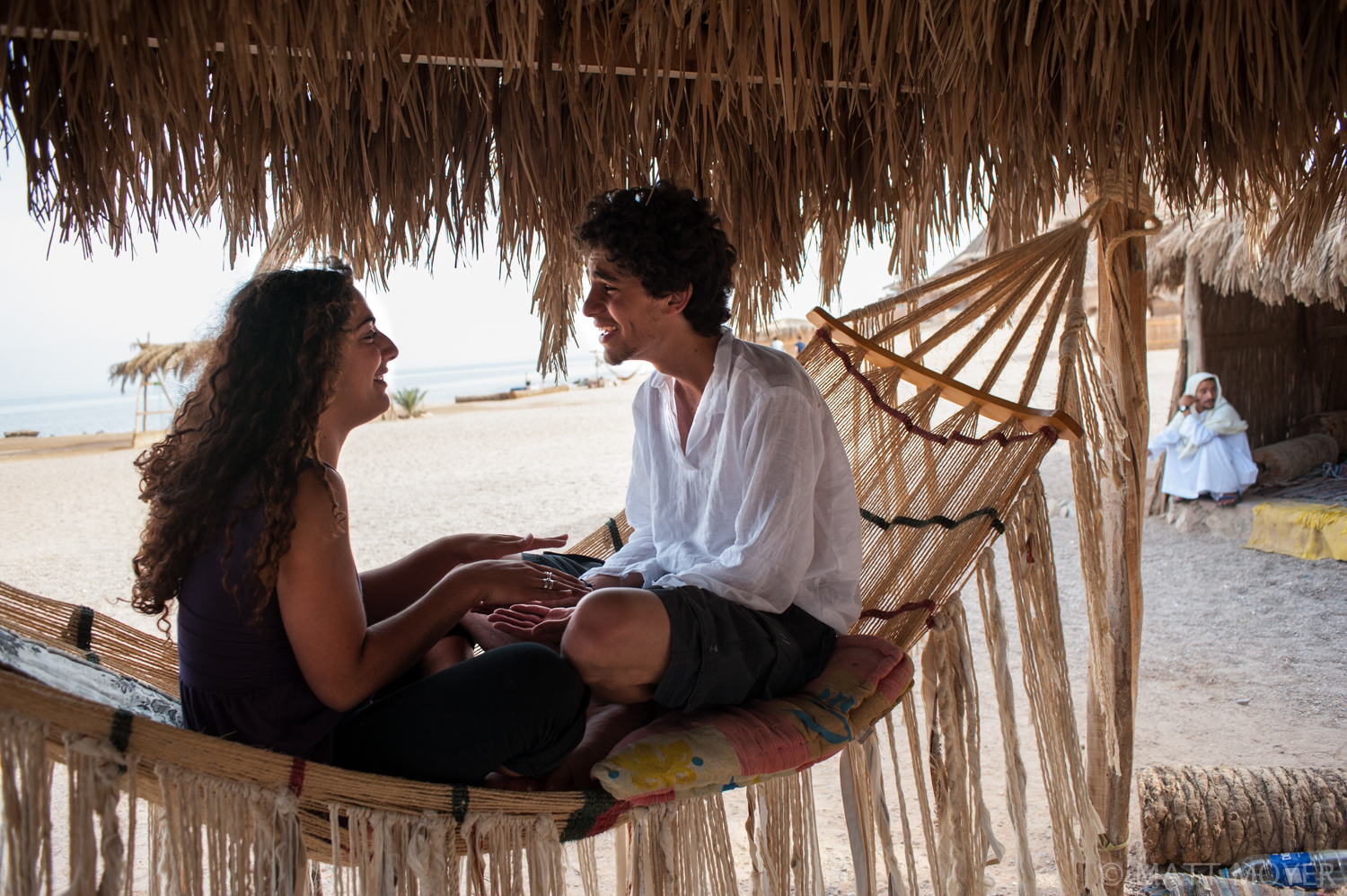
Shimrit Oded of Israel spends some time with Egyptian, Youssef Bashat of Cairo while vacationing at camp Ras Shitan during the Passover holiday near the city of Nuweiba in the Sinai, Egypt. Ras Shitan was attacked by a suicide bomber in 2004.

Tourists watch the sunrise from the top of Mount Moses. People from all over the world travel to the Sinai to climb Mount Moses and watch the sunrise.
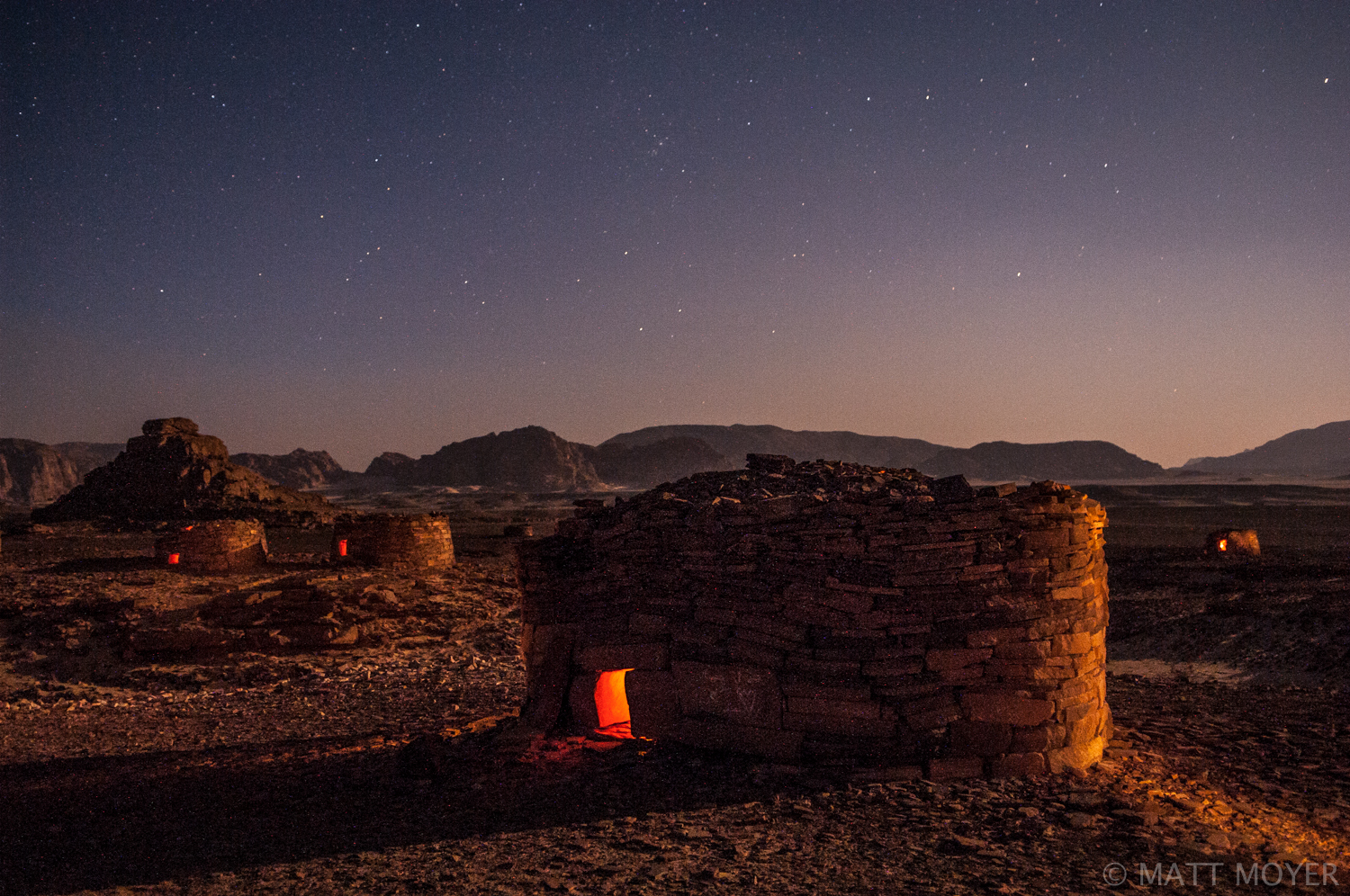
Nawamees stone structures are illuminated by moonlight in the desert between Nuweiba and St. Catherine, Egypt. These structures were constructed between 4000 and 3150 BC. Their use is unknown but they are thought to perhaps be tombs or burial chambers.



































PUBLISHED
To read the article in National Geographic click here.

